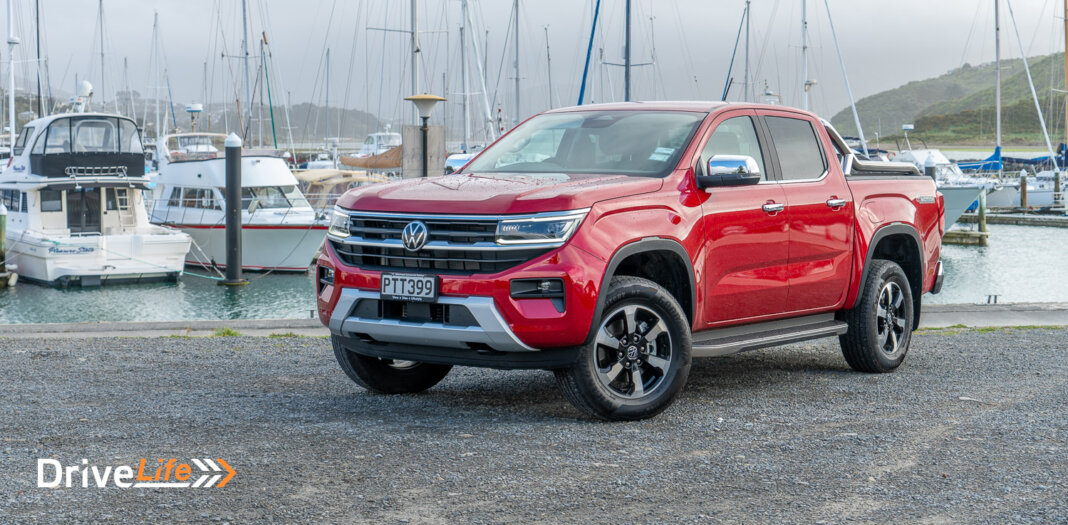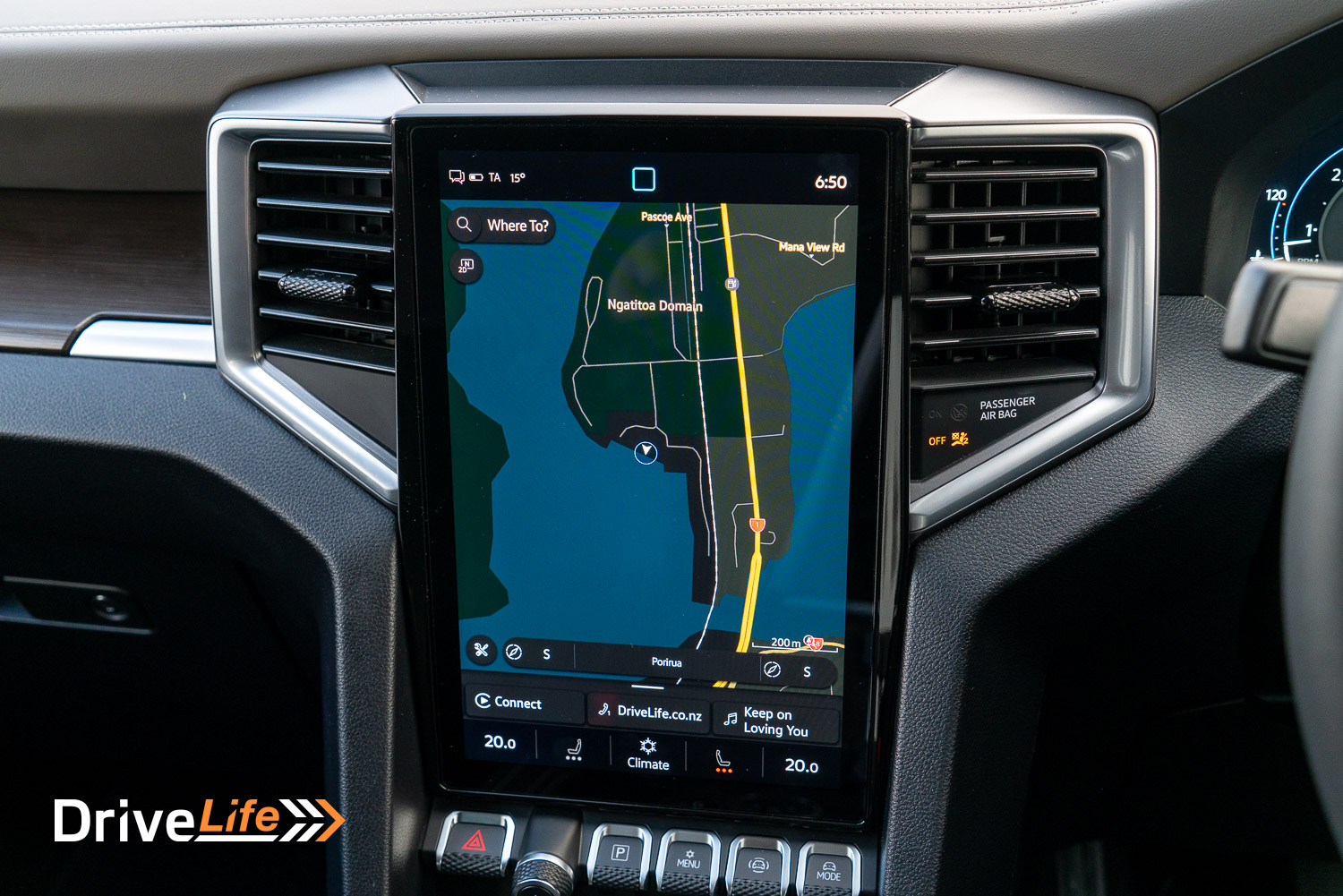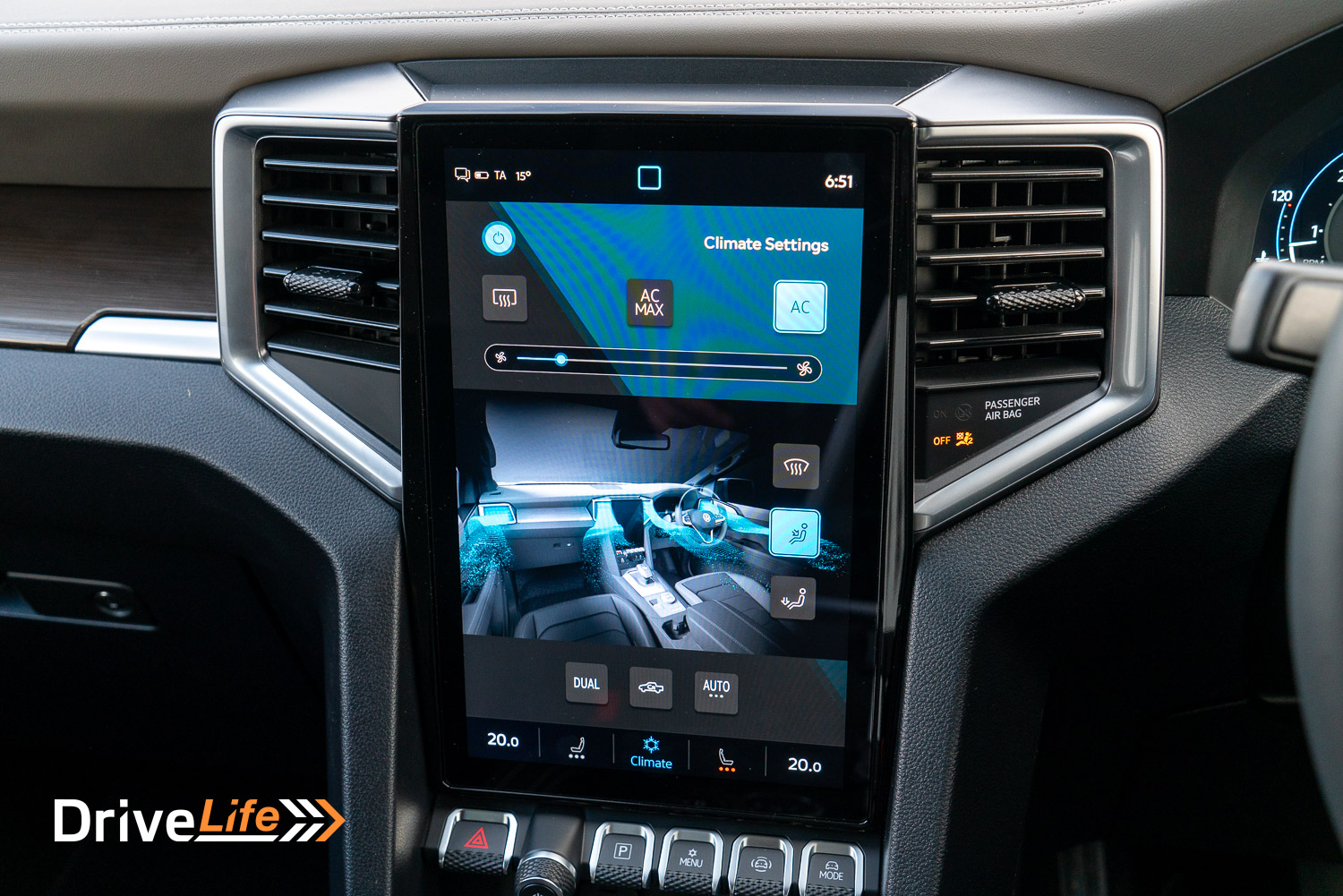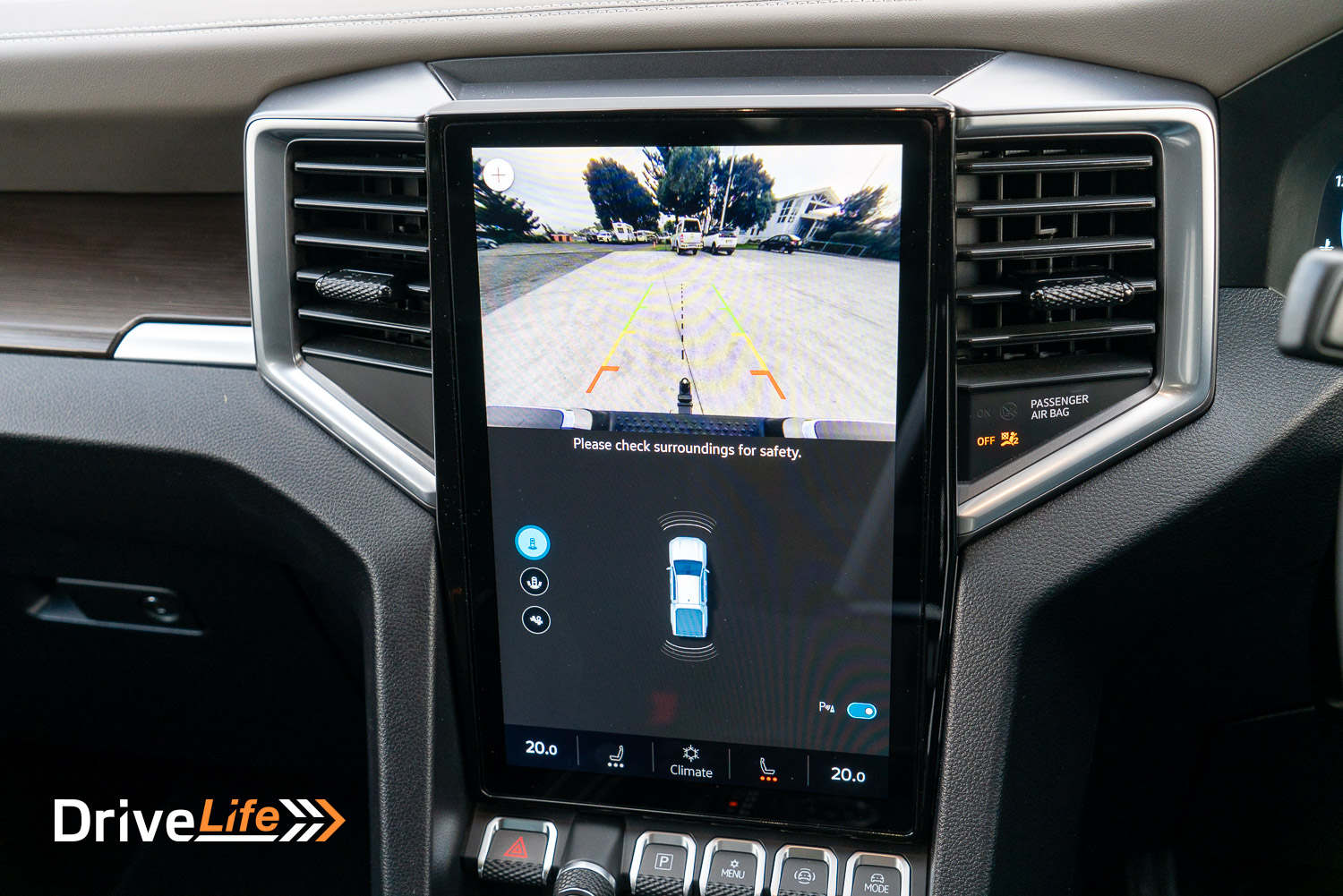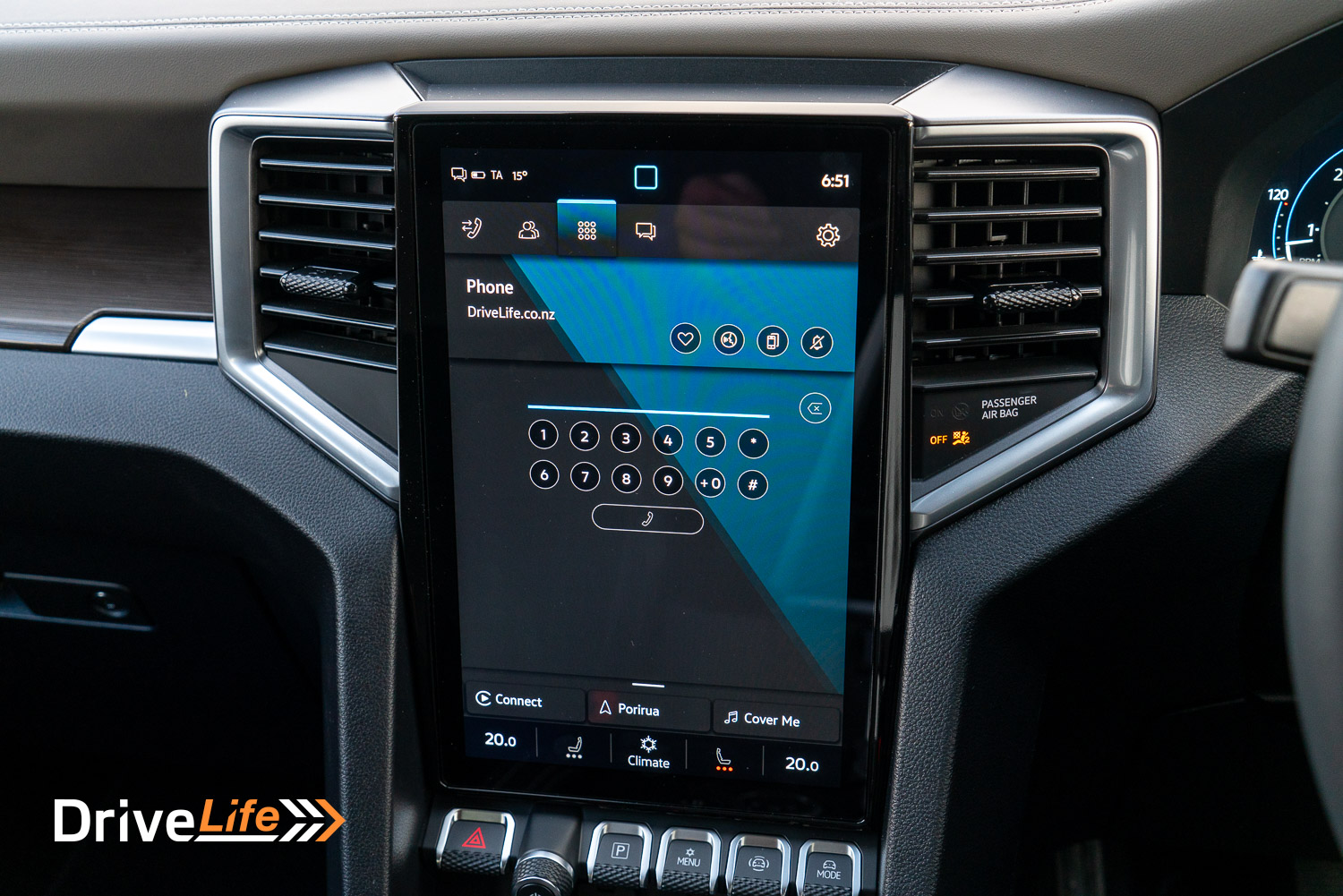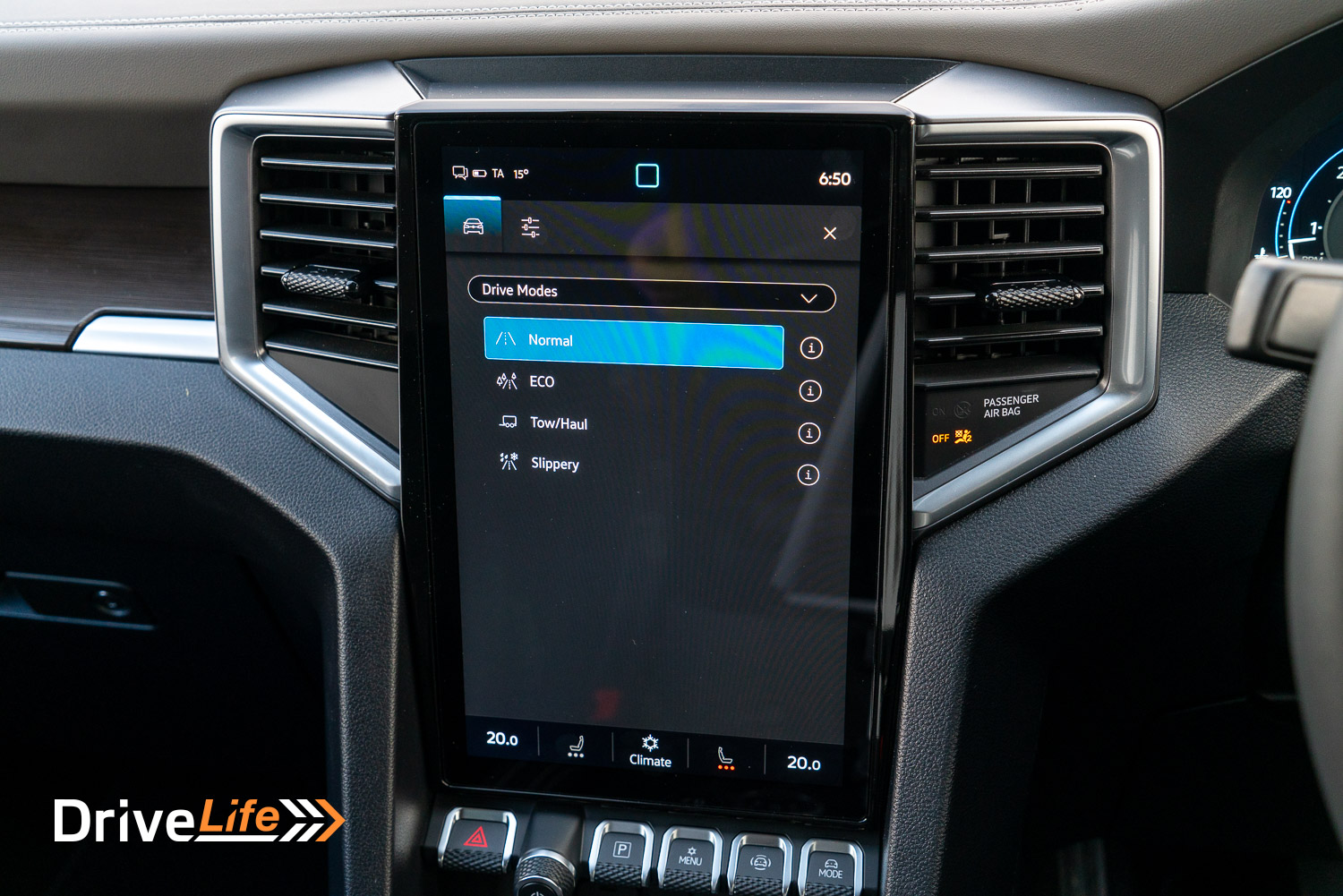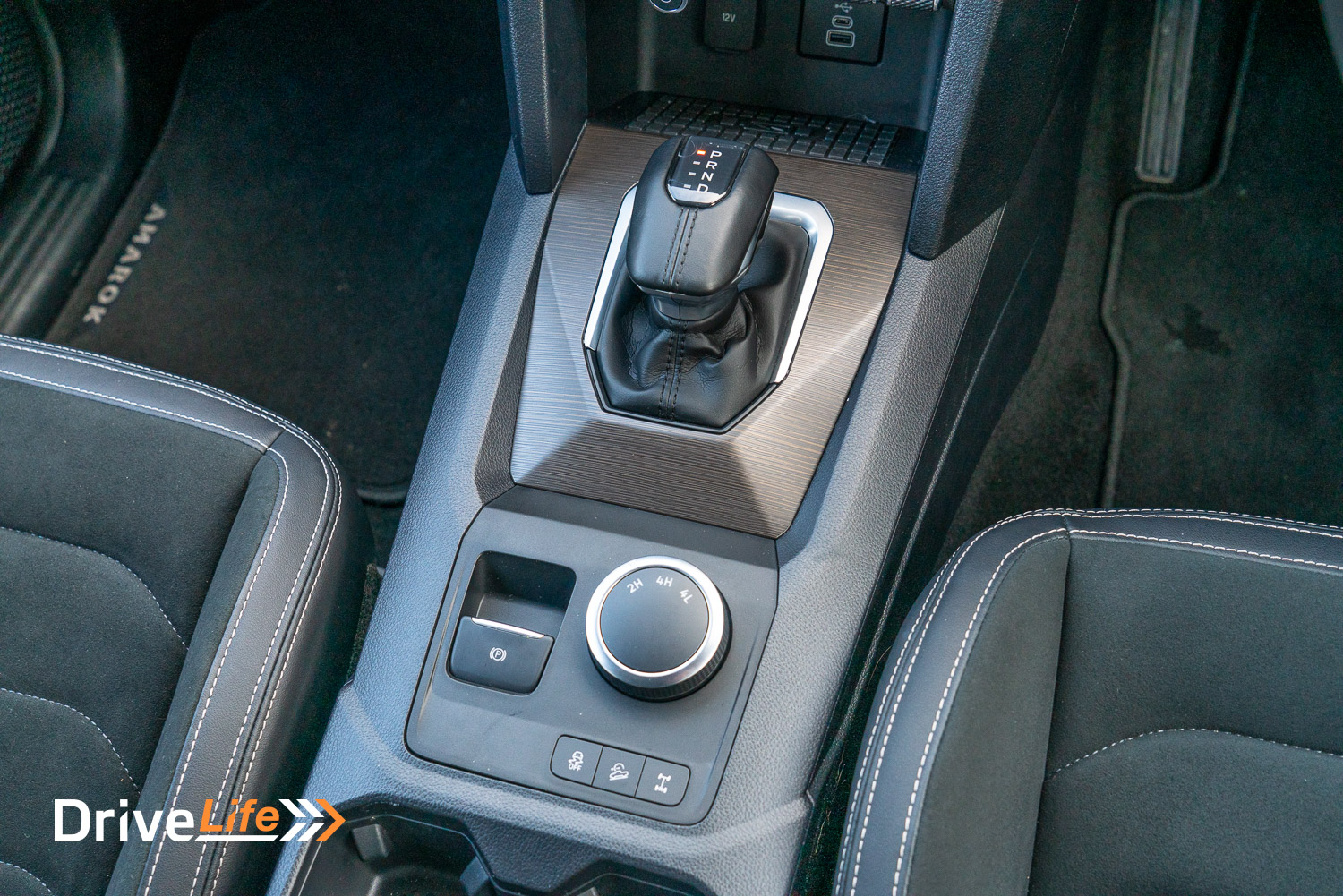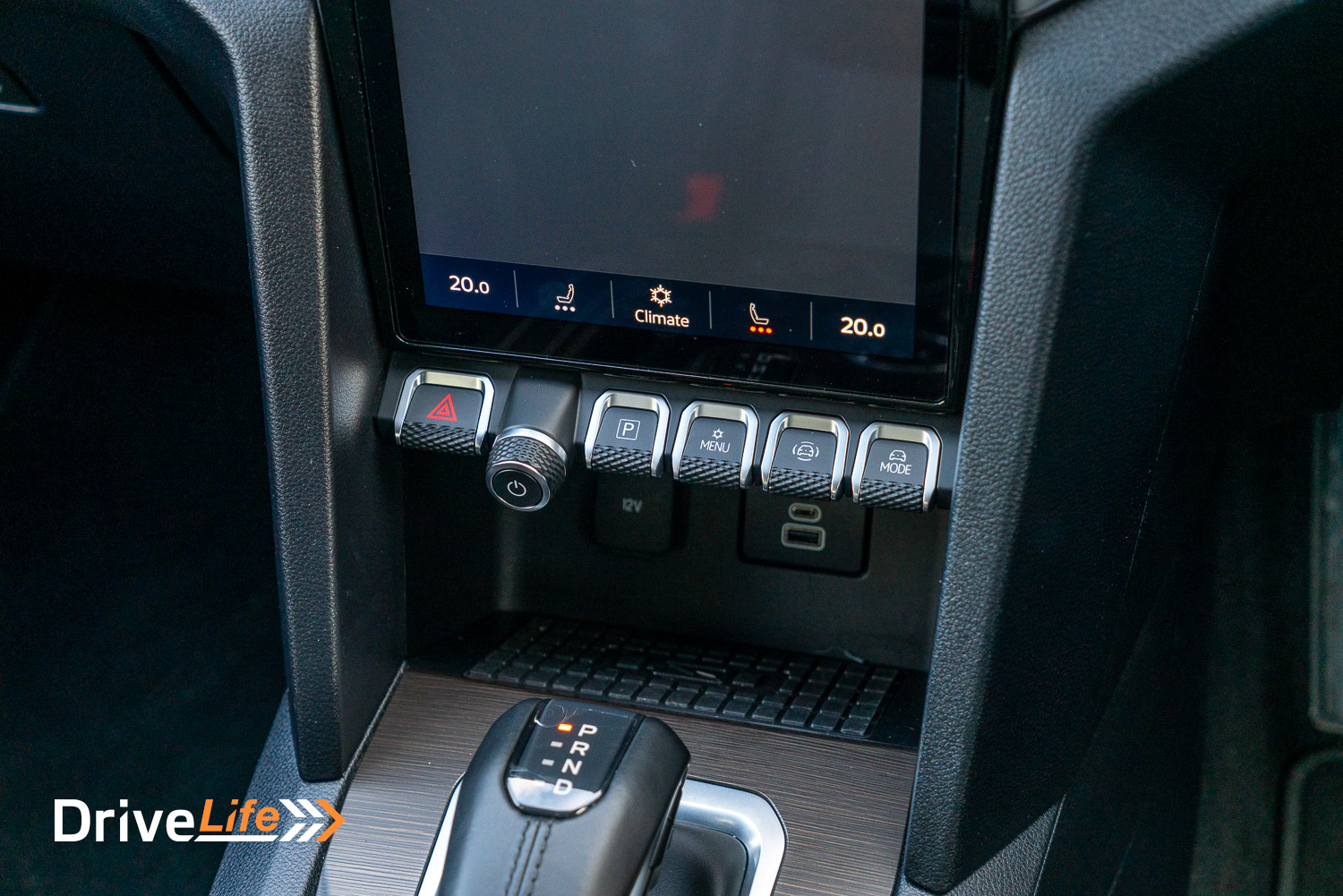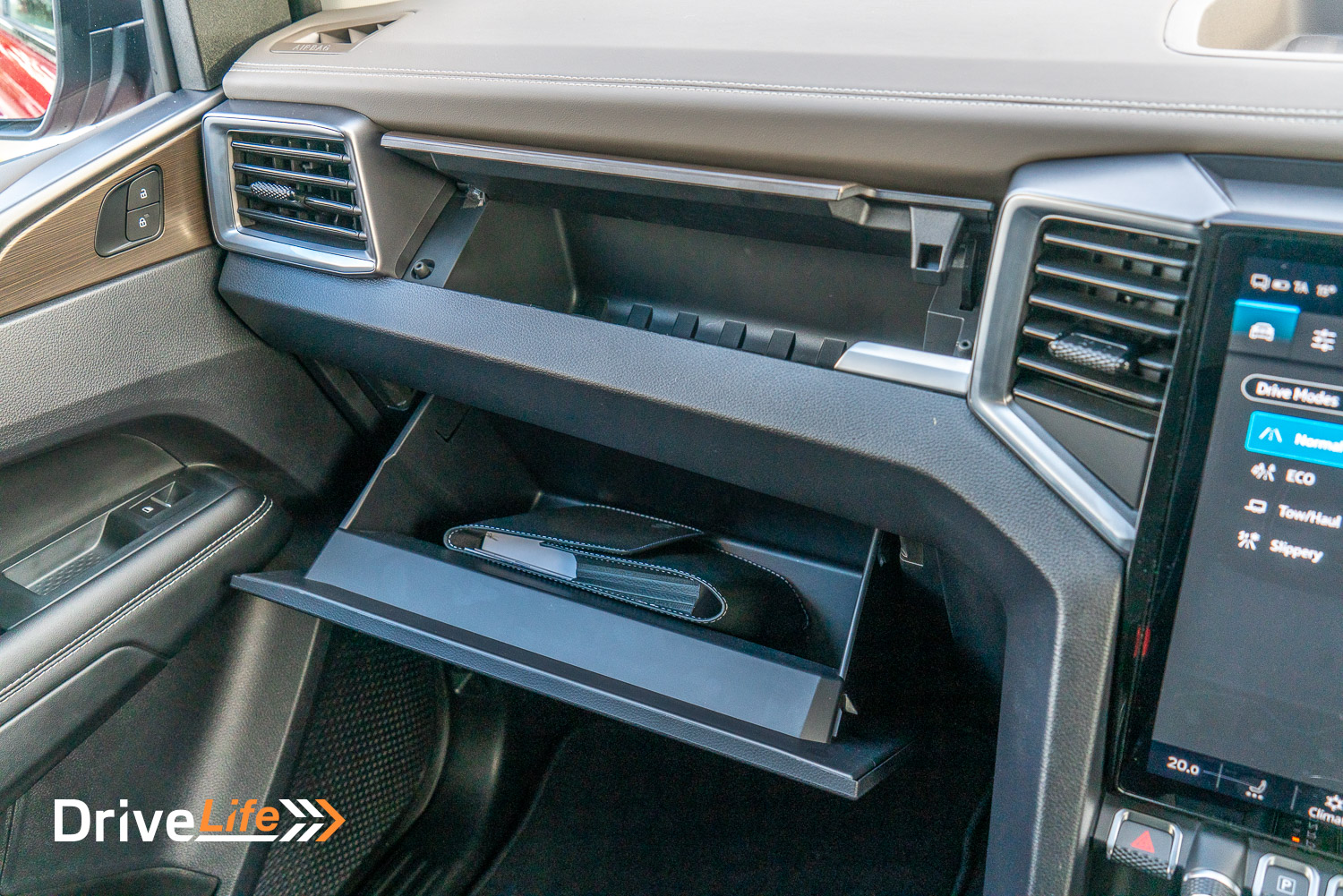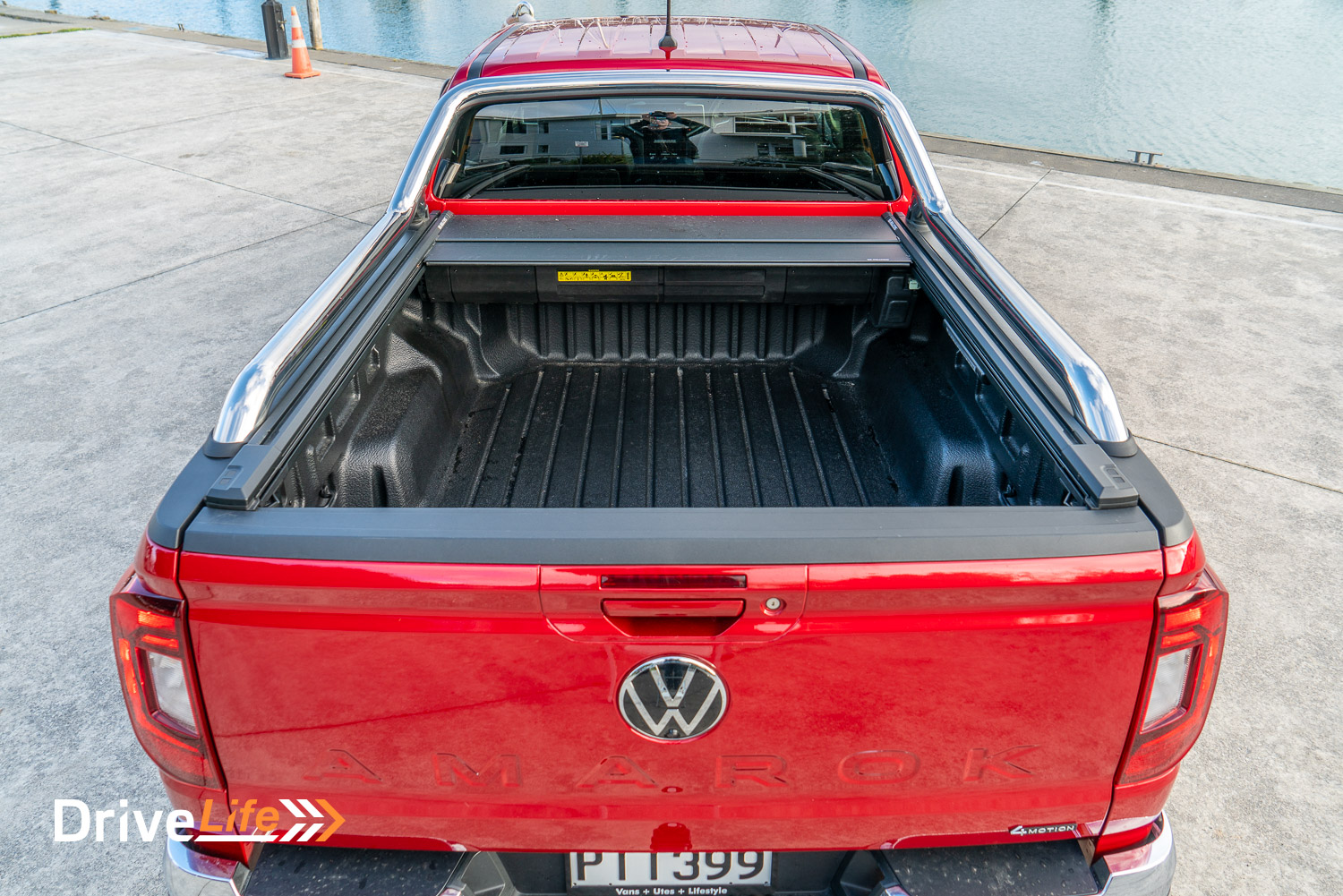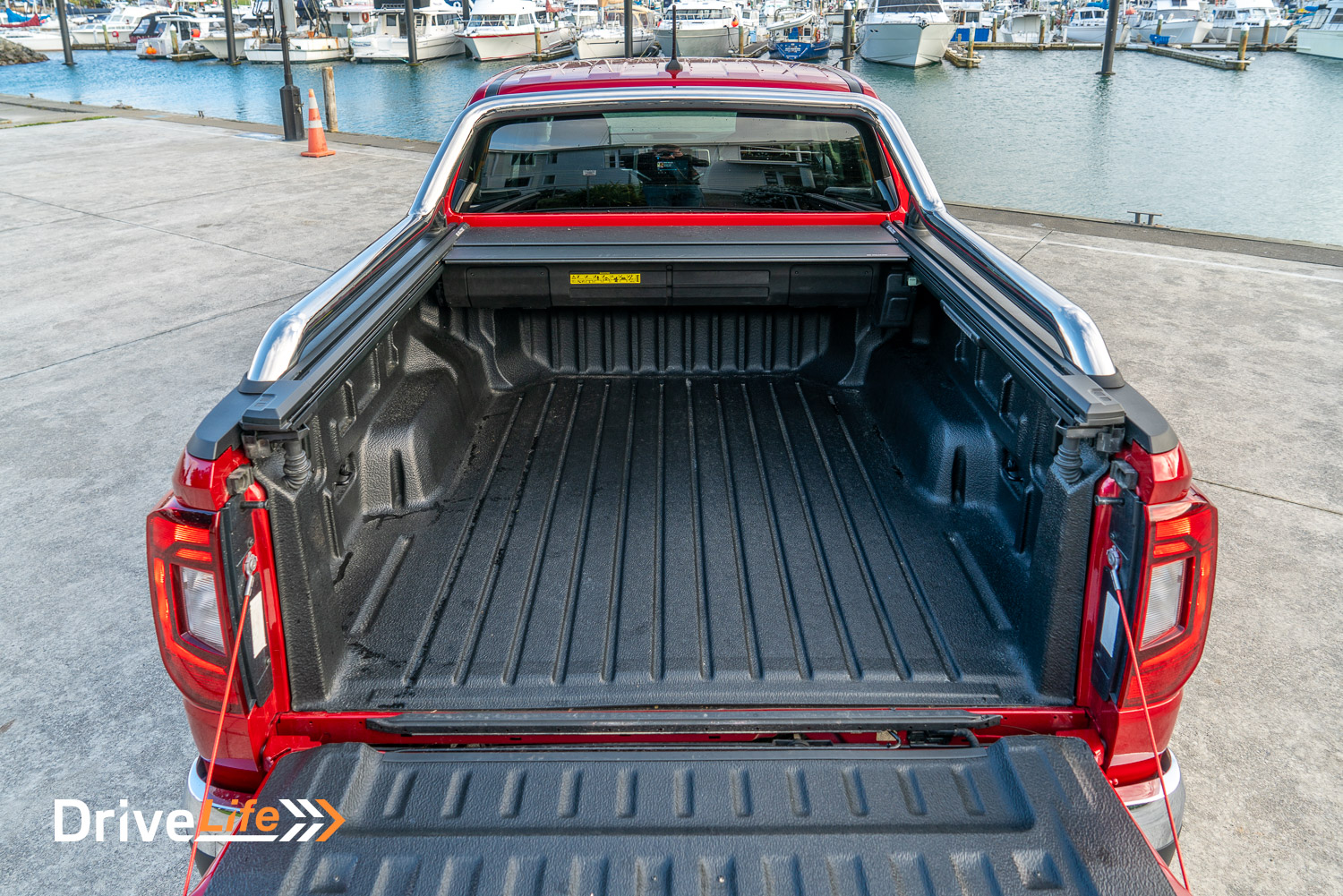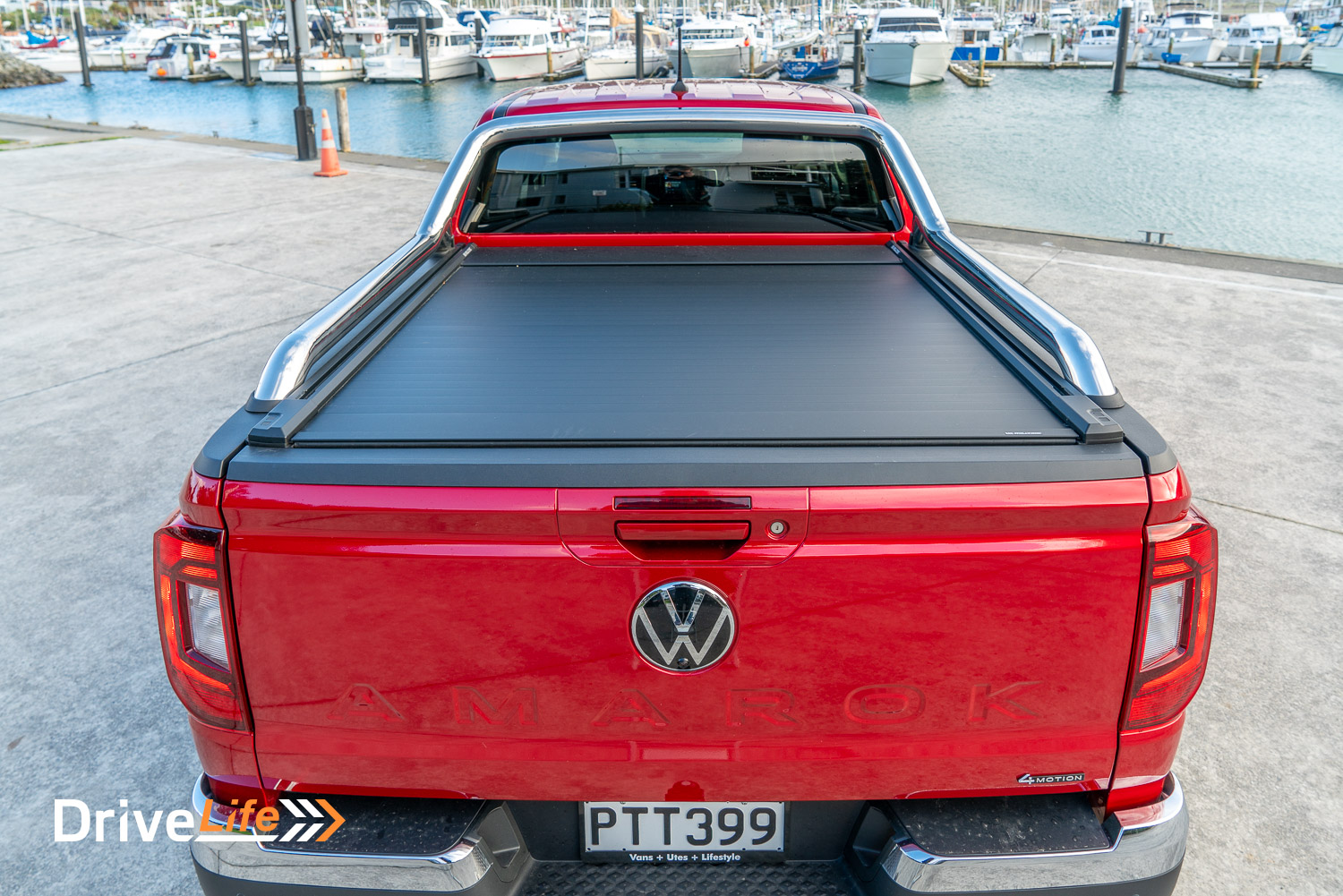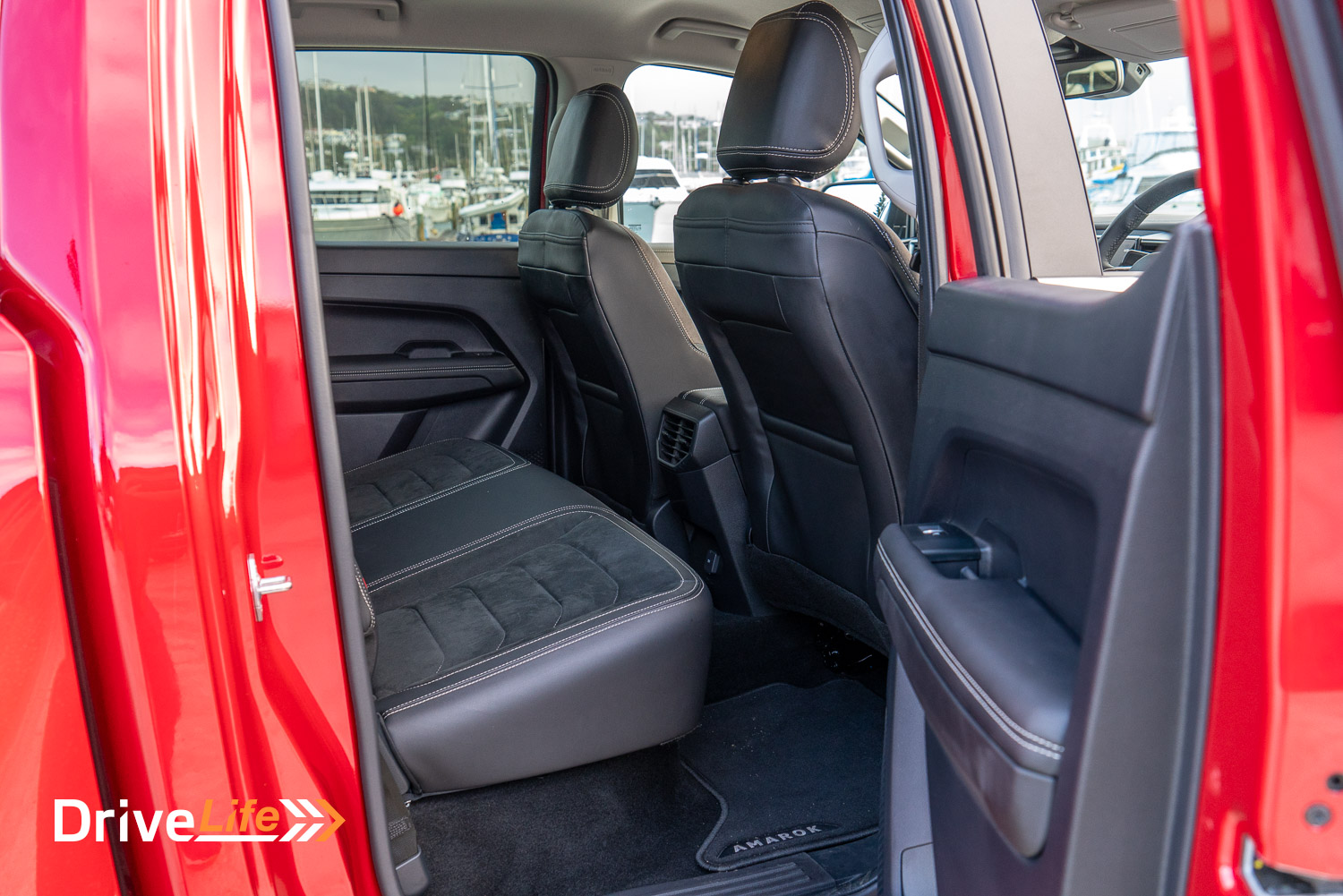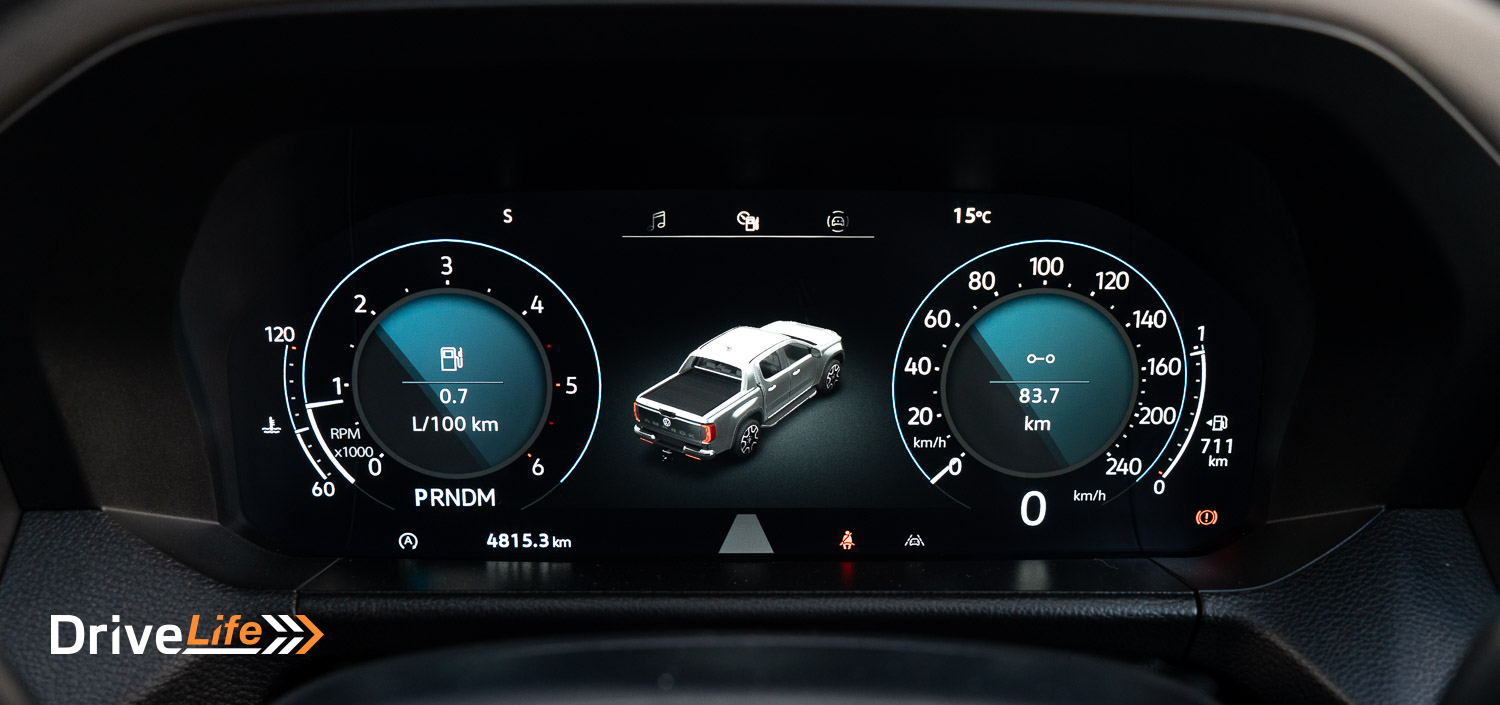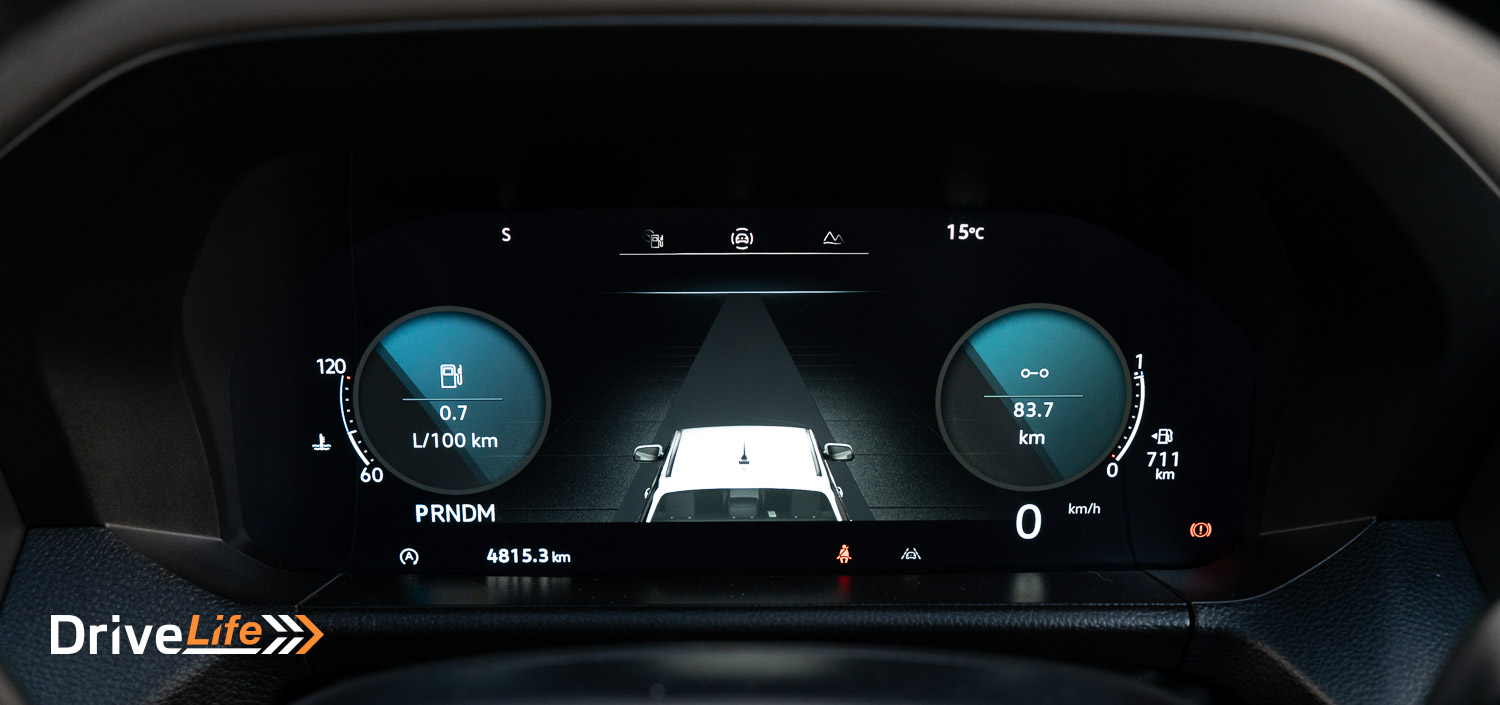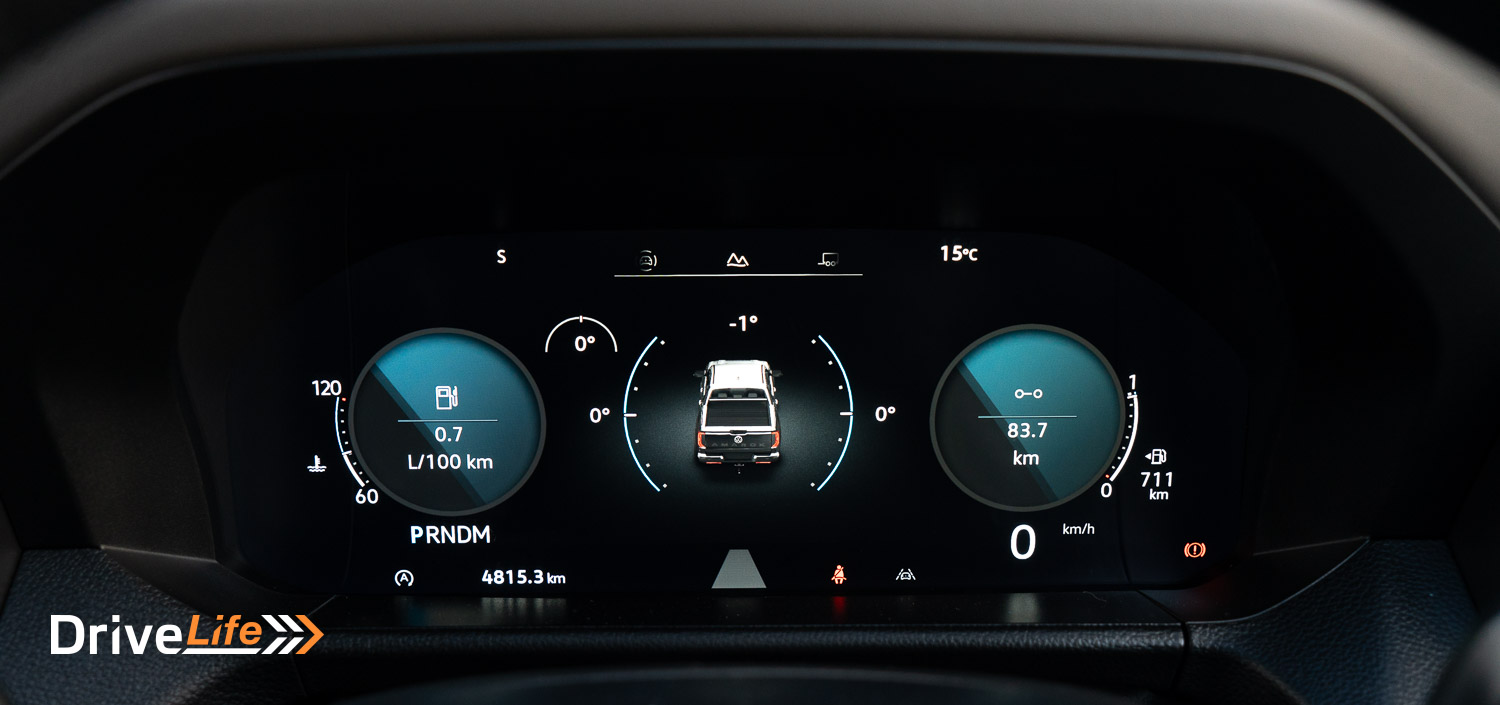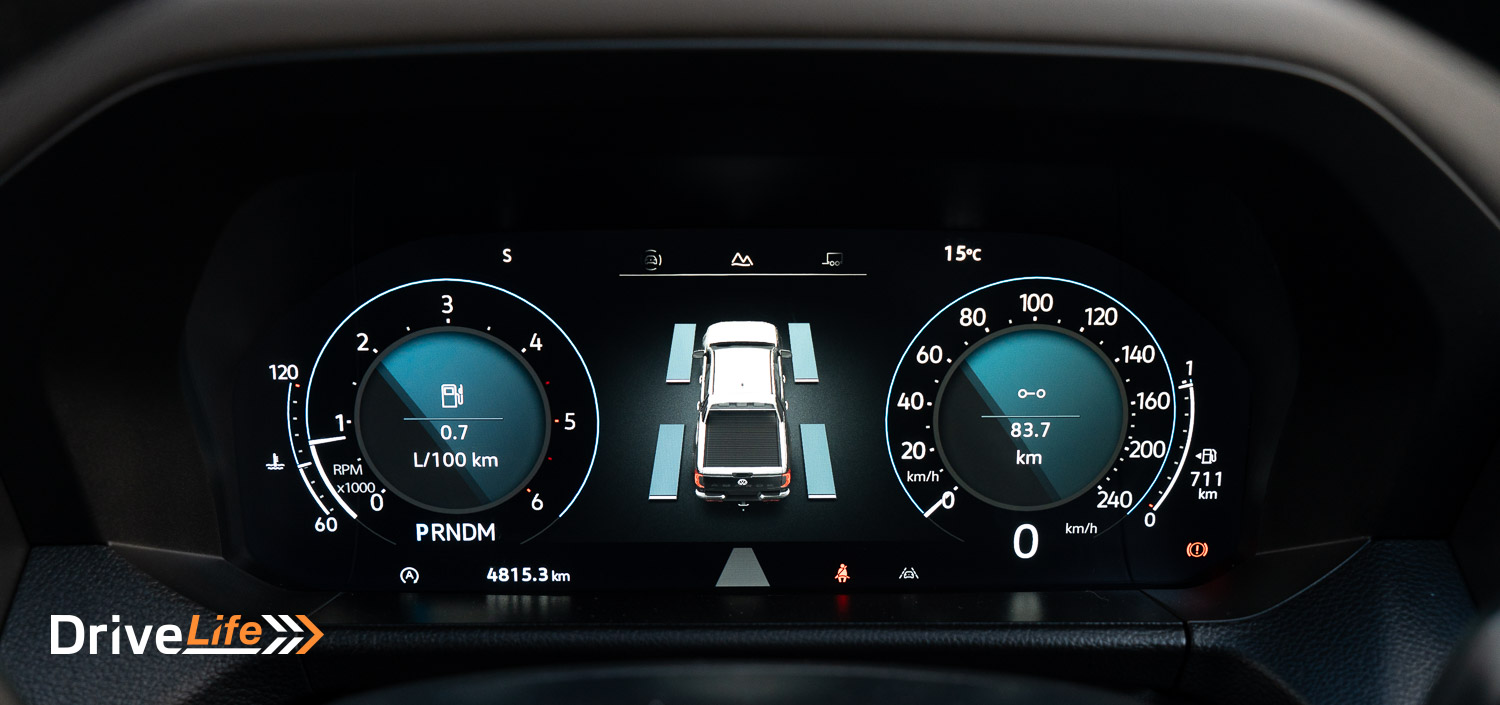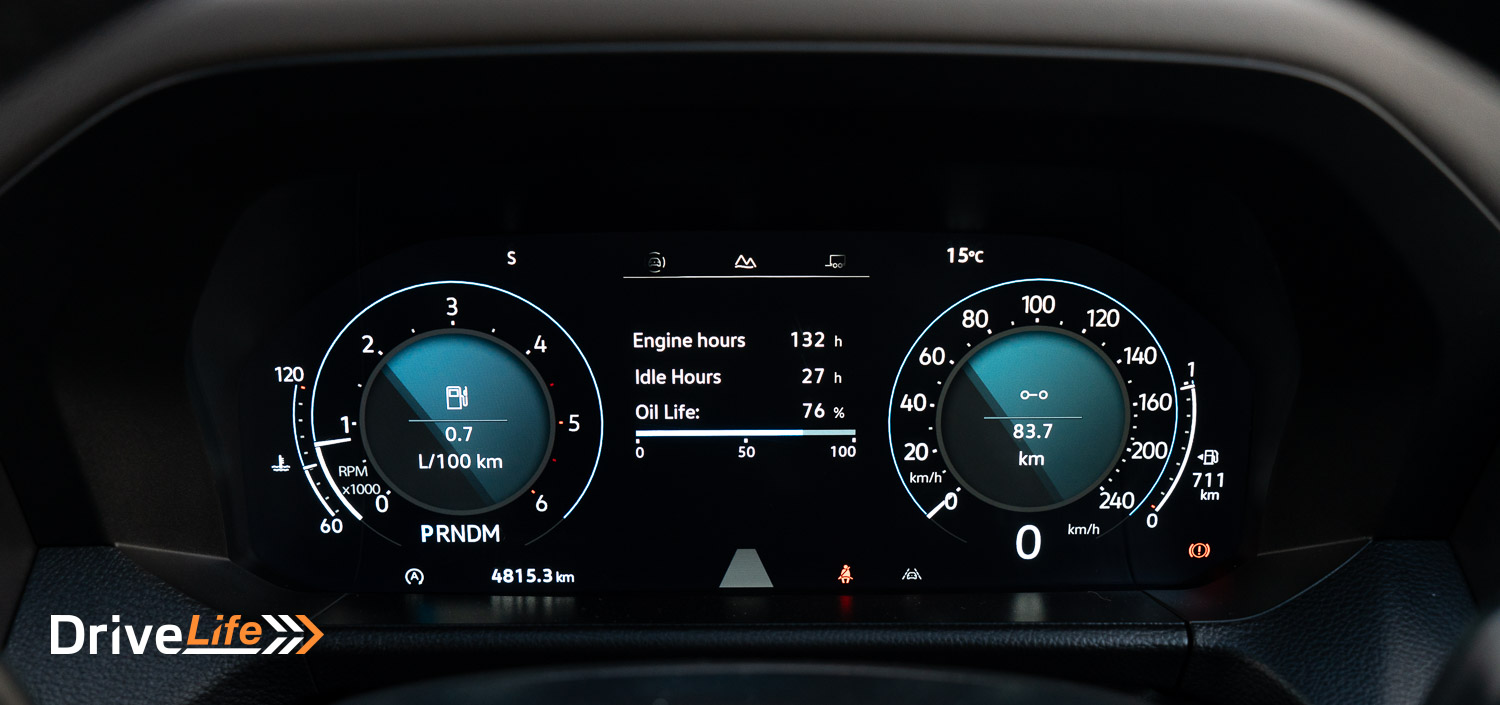In 2010, Volkswagen debuted its first ute, the Amarok. The Amarok was a brand-spanking new ute, built from the ground up by the German auto powerhouse.
The Amarok set out to bring fastidious German engineering and a more upscale feel than its other contemporaries. In other words, the Amarok sought to bring some civility to an uncivilised bunch of utes. Civility without compromise, of course.
In less than a decade, the Amarok has already gained a devoted following for being tough and for being posh amongst rivals.
Thirteen years later, including a brief hiatus, Volkswagen has returned with the second-generation Amarok. Crucially, the new Amarok is no longer a ground-up vehicle from Volkswagen. Instead, this new-gen Amarok shares its bones with the current Ford Ranger.
Despite this radical new approach, will the second-gen Amarok be able to recapture its title at the top end of the ute market? And, is it still a proper Volkswagen?
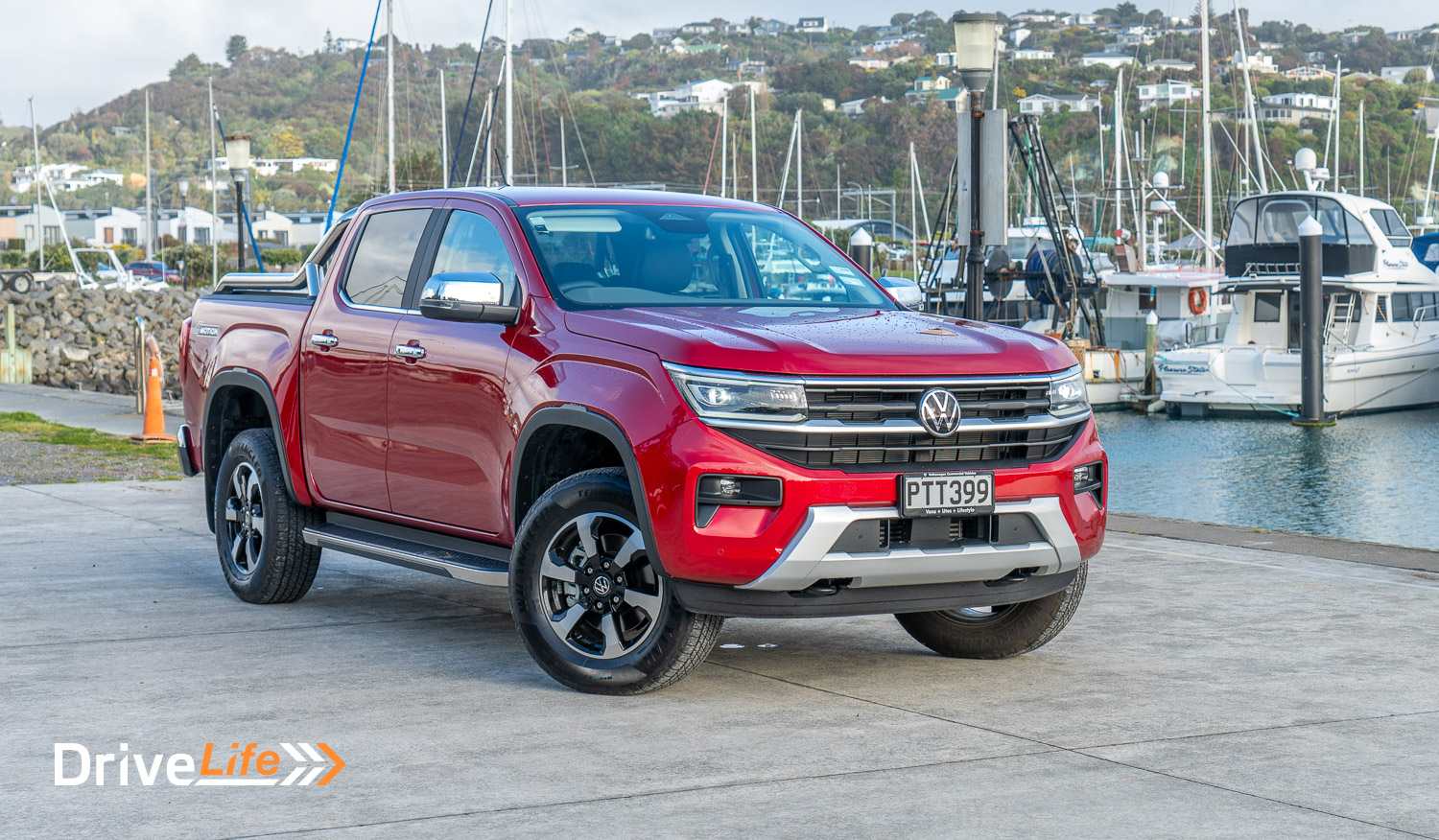
What We Like and Dislike About The 2023 Volkswagen Amarok Style
| What we like | What we don’t like |
| Engine performance Superb 10-speed transmission Refinement Road holding ability and ride quality Improvement in infotainment Just as good as the Ford Ranger | Narrow seats Not tangibly better than a Ford Ranger More expensive than a Ford Ranger |
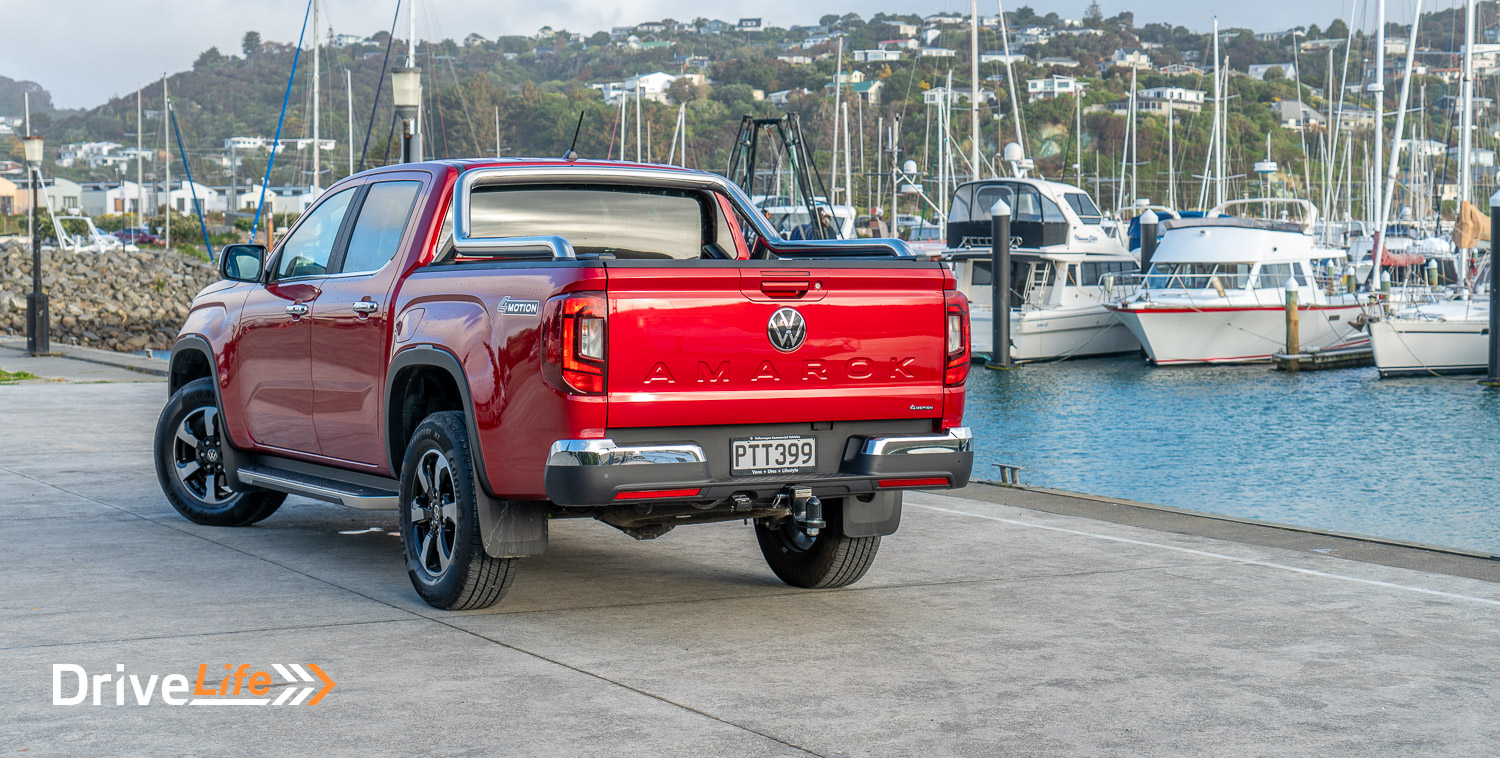
What’s In the 2023 Volkswagen Amarok Style Range?
There are four variants of the Volkswagen Amarok available for New Zealand buyers. The range starts with the entry-level Amarok Life climbing up to the top-spec Amarok Aventura. All variants are 4WD.
| Model | Engine | Drive | Price |
| Volkswagen Amarok Life | 2.0-litre 4-cylinder single-turbo diesel | 4WD | $67,000 |
| Volkswagen Amarok Style | 2.0-litre 4-cylinder twin-turbo diesel | 4WD | $77,500 |
| Volkswagen Amarok PanAmericana | 3.0-litre V6 turbo diesel | 4WD | $91,000 |
| Volkswagen Amarok Aventura | 3.0-litre V6 turbo diesel | 4WD | $93,000 |
The Life is powered by a 2.0-litre 4-cylinder turbo diesel delivering 125kW of power and 405Nm of torque, paired with a 6-speed automatic transmission.
The Style is powered by a 2.0-litre 4-cylinder twin-turbo diesel delivering 154kW of power and 500Nm of torque, paired with a 10-speed automatic transmission.
The PanAmericana and Aventura are powered by a 3.0-litre V6 turbo diesel 184kW of power and 600Nm of torque. Both pair their power plants with a 10-speed automatic transmission.
The engines and transmissions used in all Amarok variants are sourced from Ford. Yup, both 4-cylinder engines, the V6, 6 and 10-speed automatic gearboxes are found in the equivalent Ford Ranger. It feels a bit weird to say that, doesn’t it?
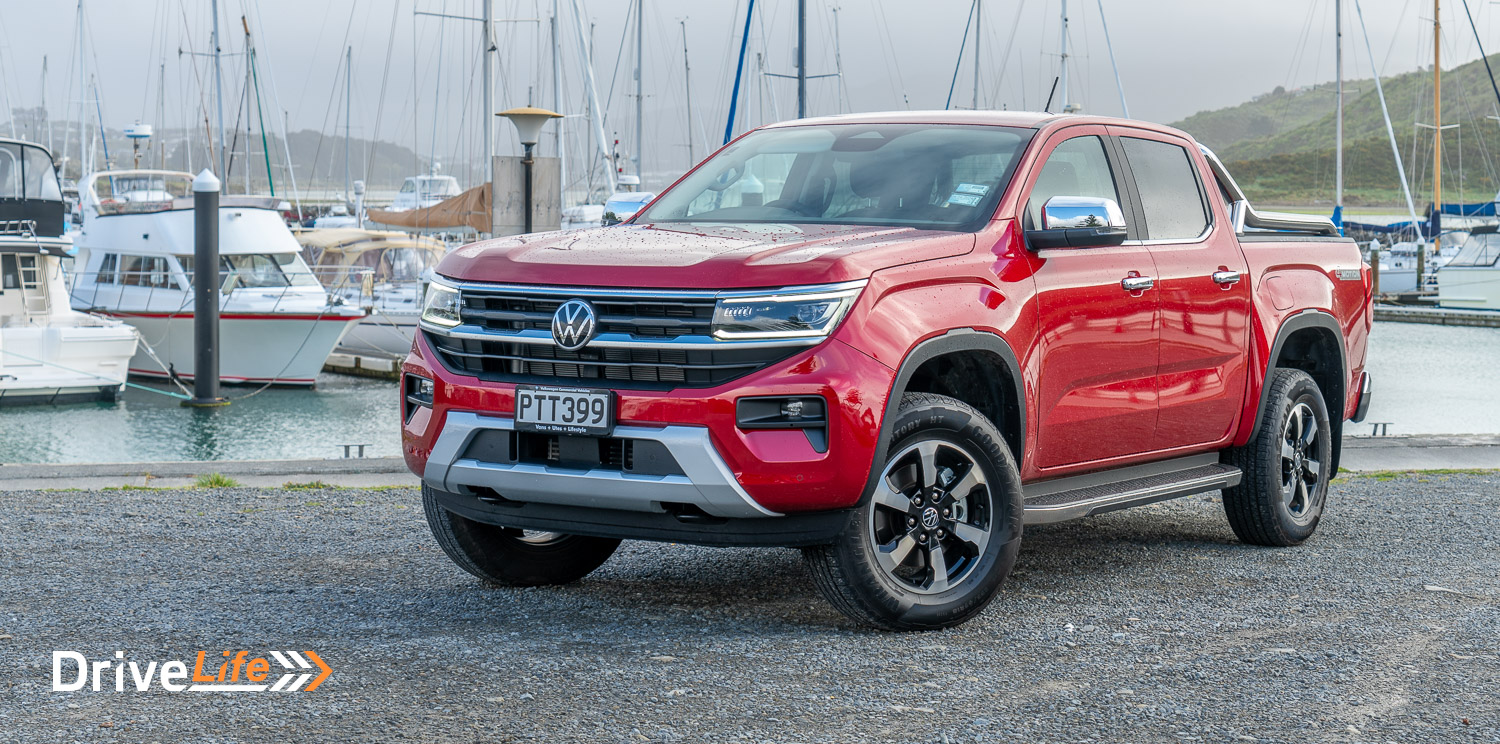
2023 Volkswagen Amarok Style Standard Equipment Highlights
The entry-level Amarok Style offers:
- 17’’ Alloys
- 12″ Infotainment with Apple CarPlay, Android Auto, Bluetooth
- 12.3″ Instrument Cluster Display
- 6-speaker audio system
- Adaptive Cruise Control
- Automatic headlights
- Cloth Upholstery
- Dual Zone Air-Conditioning
- Heated wing mirrors
- ISO-FIX
- LED daytime running lights and fog lights
- LED headlights
- Locking differential
- Privacy glass
- Rain sensing wipers
- Rear View Camera
- Wireless phone charger
In addition to the Life, the Style adds:
- 18’’ Alloys
- 10-way power adjusting driver’s seat
- Ambient lighting
- Chrome finishes
- Dynamic Light Assist (vehicle-detecting high beams)
- Electronic gearshift
- Heated front seats
- Keyless Entry & Keyless Start System
- Matrix LED headlights
- Rubber tray liner
- Sat-Nav
- Suede and Leatherette Upholstery
In addition to the Style, the PanAmericana adds:
- 18’’ Alloys – Black
- 10-way power adjust passenger’s seat
- 8-speaker Harman-Kardon sound system
- Area View Camera
- Black exterior finishes
- Black roof liner
- Comfort Suspension
- Intelligent Adaptive Cruise Control
- Leather Upholstery
- LED tail-lights
- Park Assist
- Roof Rails
- Spray-in bed liner
The Amarok Aventura adds:
- 20’’ Alloys
- Advanced Park Assist
- Heated Steering wheel
- Leather Upholstery (different design)
- Premium Floor Mats
- Rubber tray liner (deletes spray-in liner)
All Amarok variants come standard with various safety features, including:
- 9 Airbags
- Adaptive Cruise Control
- Blind Spot Monitoring
- Forward Collision Warning with Autonomous Emergency Braking
- Front & Rear Parking Sensors
- Junction Assist
- Lane Keep Assist
- Multi-collision mitigation braking system
- Pedestrian & Cyclist Monitoring
- Rear Cross Traffic Alert
- Speed Sign Recognition
- Tire Pressure Monitoring System
There are five standard colours, plus two unique model colours, available for the Amarok:
- Agate Black
- Carbonite Grey
- Frozen White
- Lucid Red
- Moon Dust Silver
- Diffused Silver (PanAmericana only)
- Moroccan Blue (Aventura only)
For more information on Volkswagen Amarok, check out the Volkswagen New Zealand website.
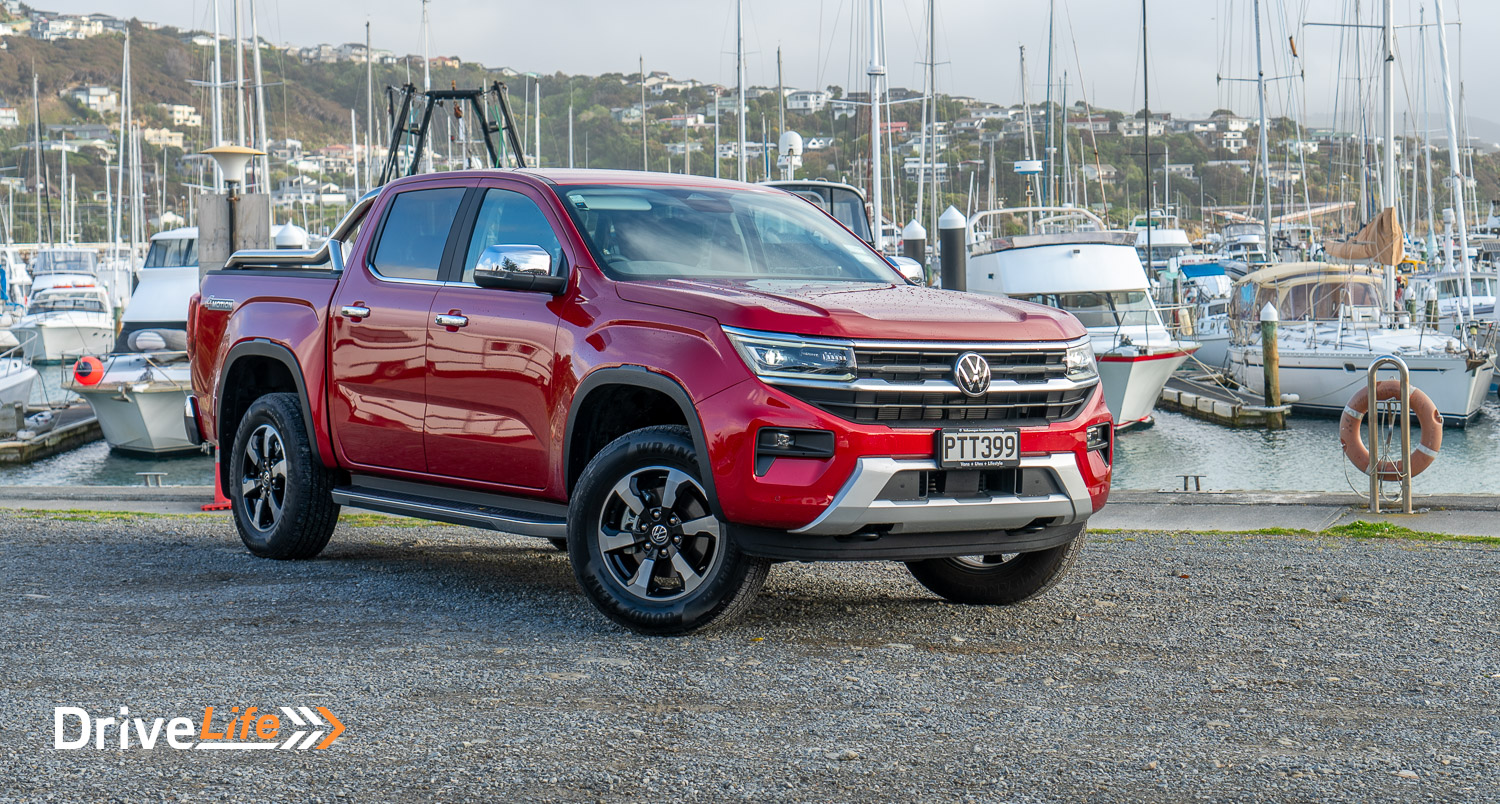
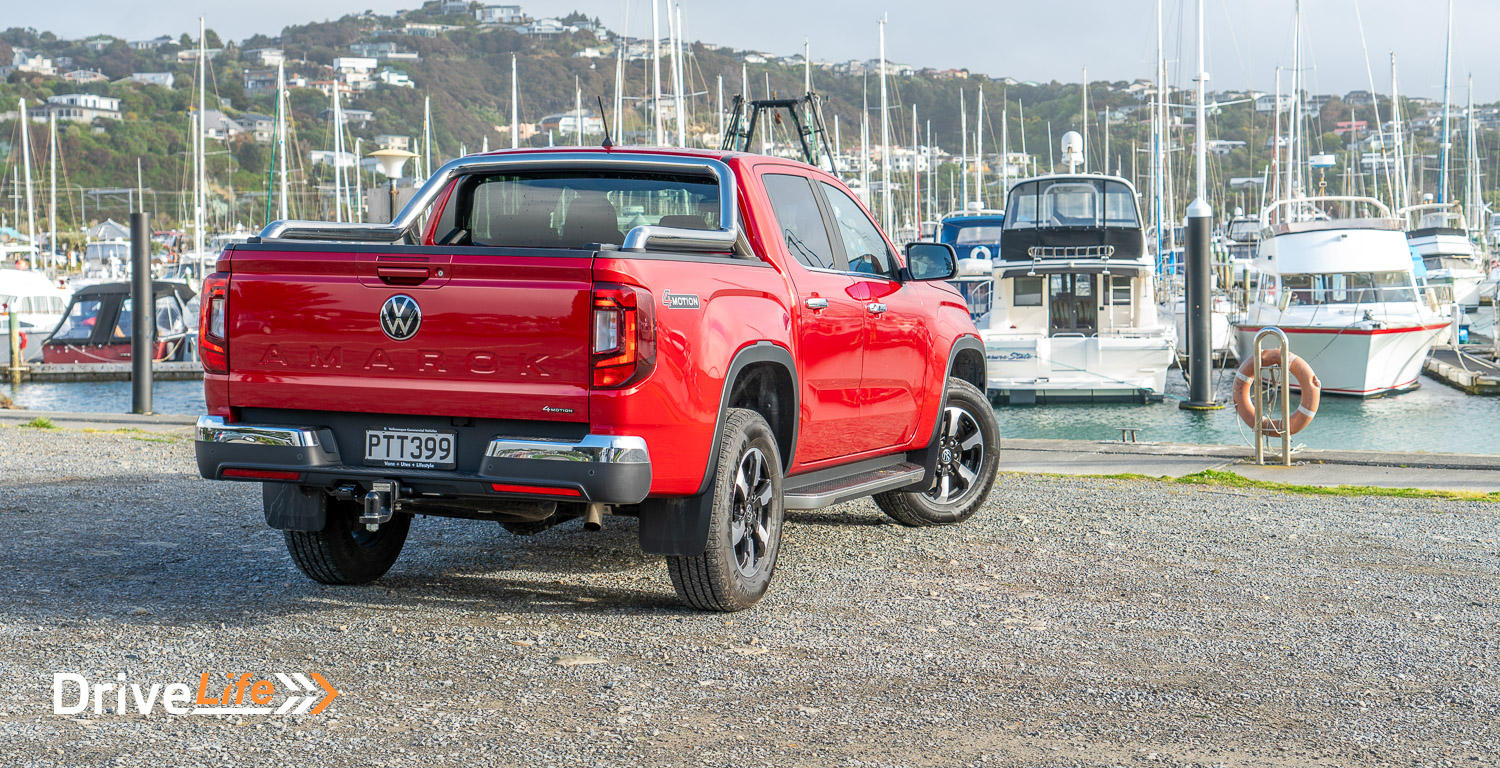
How Does The 2023 Volkswagen Amarok Style Compare To Its Competition?
Three of the top five vehicles sold in New Zealand are utes. Naturally, you’re going to have a few options in this segment. Here’s a list of the usual suspects.
| Make/Model | Engine | Power/Torque (kW/Nm) | Fuel economy (L/100km) | Towing capacity (Kg) | Price (excl CCP) |
| Volkswagen Amarok Style | 2.0-litre 4-cylinder twin-turbo diesel | 154/500 | 8.3 | 750/3,500 | $77,500 |
| Ford Ranger Wildtrak | 2.0-litre 4-cylinder twin-turbo diesel | 154/500 | 8.3 | 750/3,500 | $75,990 |
| Nissan Navara Pro-4X | 2.3-litre 4-cylinder twin-turbo diesel | 140/450 | 7.6 | 750/3,500 | $70,490 |
| Mazda BT-50 Takami | 3.0-litre 4-cylinder turbo diesel | 140/450 | 9.2 | 750/3,500 | $70,290 |
| Ford Ranger Sport (4×4) | 2.0-litre 4-cylinder twin-turbo diesel | 154/500 | 8.3 | 750/3,500 | $69,990 |
| Isuzu D-MAX X-Terrain | 3.0-litre 4-cylinder turbo diesel | 140/450 | 9.2 | 750/3,500 | $65,990 |
| Toyota Hilux SR5 Cruiser | 2.8-litre 4-cylinder turbo diesel | 150/500 | 9.5 | 750/3,500 | $63,390 |
| Mitsubishi Triton | 2.4-litre 4-cylinder turbo diesel | 135/437 | 9.8 | 750/3,500 | $53,990 |
| GWM Cannon-L | 2.4-litre 4-cylinder turbo diesel | 120/400 | 9.4 | 750/3,000 | $39,815 |
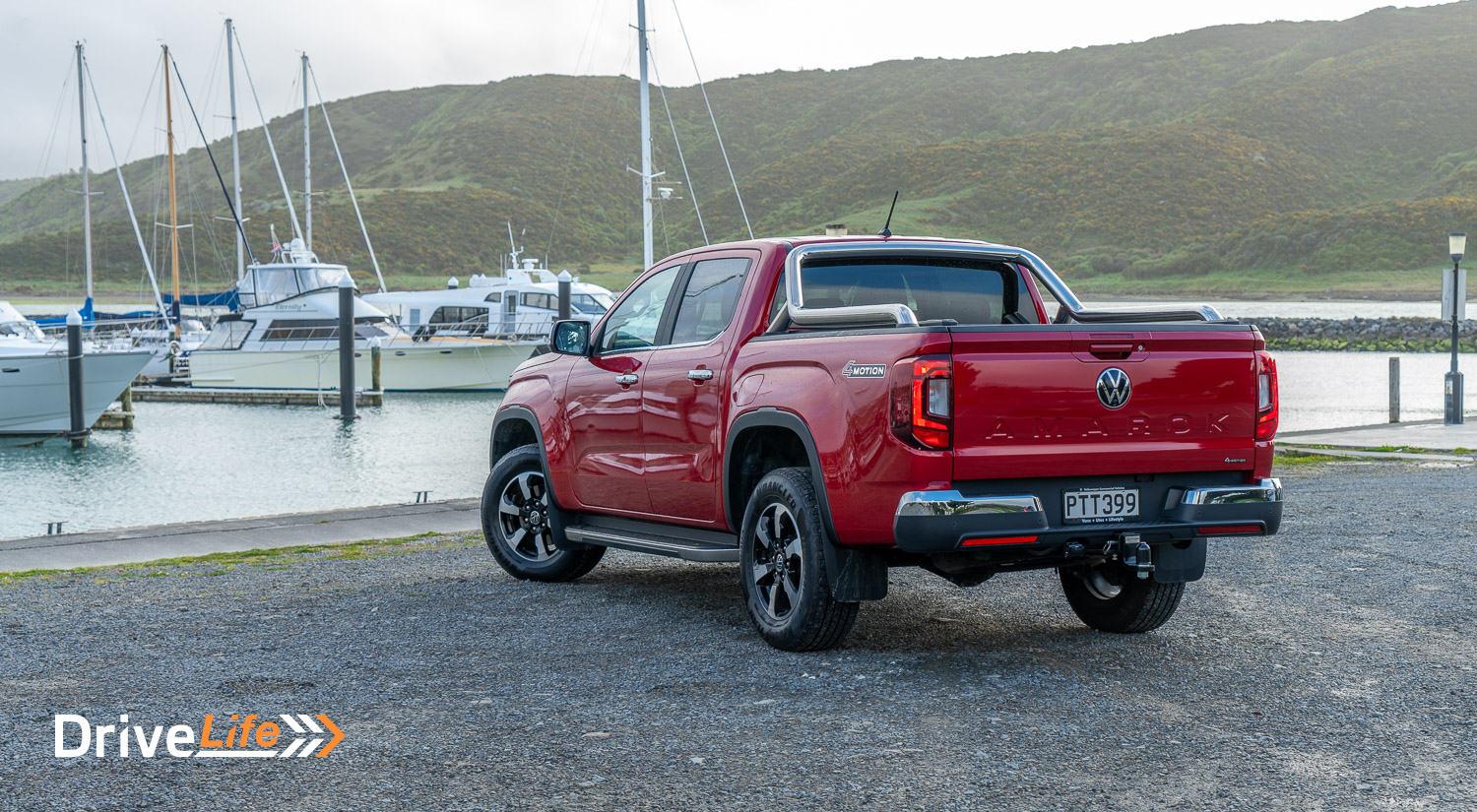
First Impressions Of The 2023 Volkswagen Amarok Style
The new-gen Amarok might have a closely related blue-oval cousin, but you’d be hard-pressed to determine that by looking at the outside.
That’s because the Amarok is different from the outside. The carry-overs between it and the Ford Ranger include the wing mirrors, door handles and most of the cabin glass. The rest is from Volkswagen and unique to the Amarok.
From the outside, the Amarok has a slightly softer, more refined aesthetic. The face is more rounded compared with the Ranger’s square jaw design. There are also more body details and panel sculpting, most noticeable down the flanks and across the bonnet. These details give the design a certain maturity while retaining its rugged and purposeful edge.
In all, it’s a solid effort by Volkswagen to differentiate the Amarok from the Ranger and others in the class.
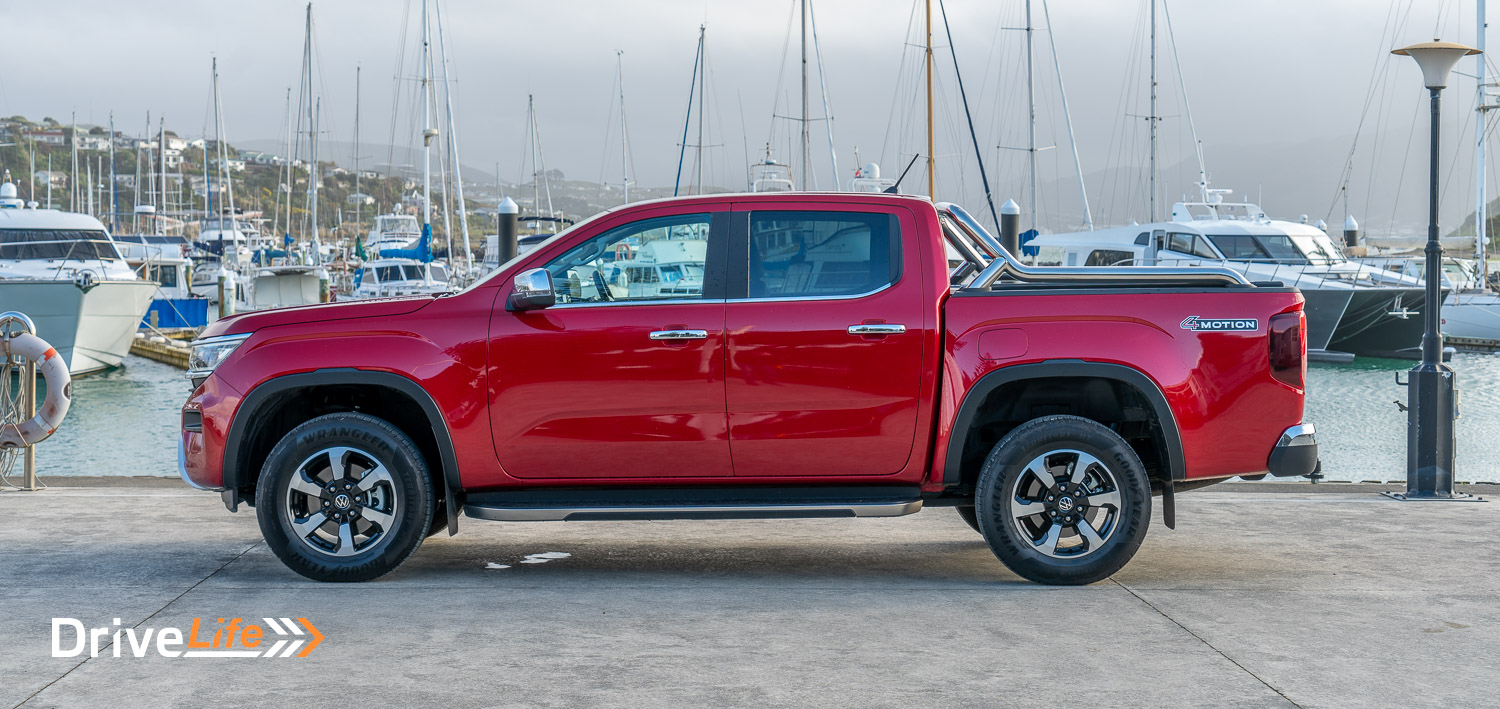
What’s The Interior Like In The 2023 Volkswagen Amarok Style?
As mentioned earlier, the original Amarok garnered its following by being a cut above its peers. It had higher quality plastics and a Germanic build quality that was foreign to the rough’n’tumble interiors of utes at the time. In other words, the Amarok was the posh ute. It was the ute of choice for the quantity surveyors and project managers, while the labourers drove a Hilux, Ranger or a Triton.
It’s not the case that the Amarok was too soft for the mainstream competition. Instead, the Amarok enjoyed the advantage of being that bit more socially refined, albeit at a higher price. Owners of an Amarok could take their ute to a flash restaurant, and it wouldn’t look out of place.
All this is what we’ve come to expect from the Amarok in its near 13 years of production. So, has Volkswagen followed through with this generation?
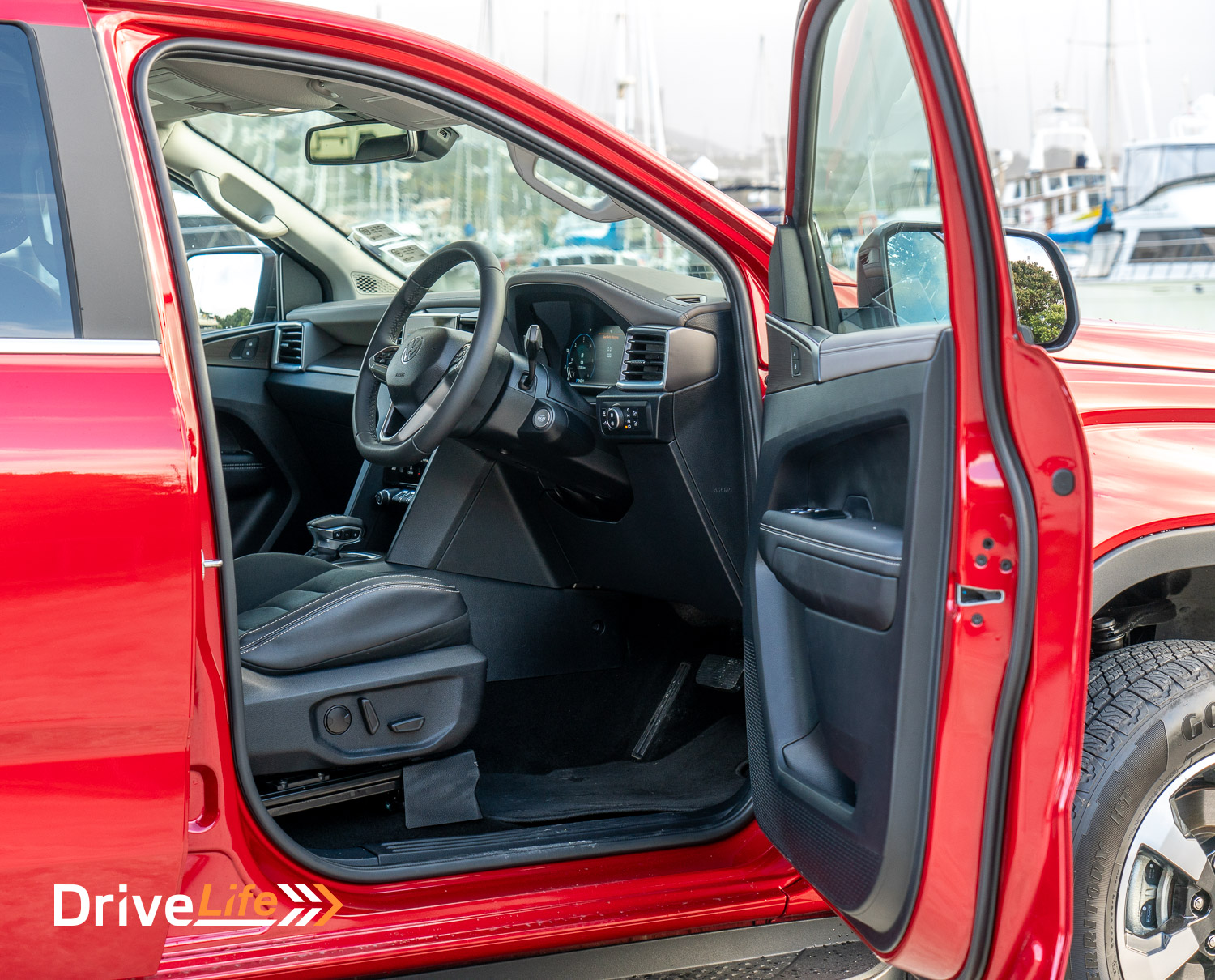
Stepping inside, the Amarok opts for softer tones and trims, relative to the Ranger’s sportier aesthetic. One will note some similarities, particularly with the large portrait-oriented infotainment occupying the centre console. But, for rest, the Amarok’s interior is unique from the Ranger.
The Amarok has a different dash, different door cards and centre console design. The seats are also Volkswagen’s own number, as is the steering wheel which has proper buttons, unlike the haptic touch-control nonsense on some new Volkswagens.
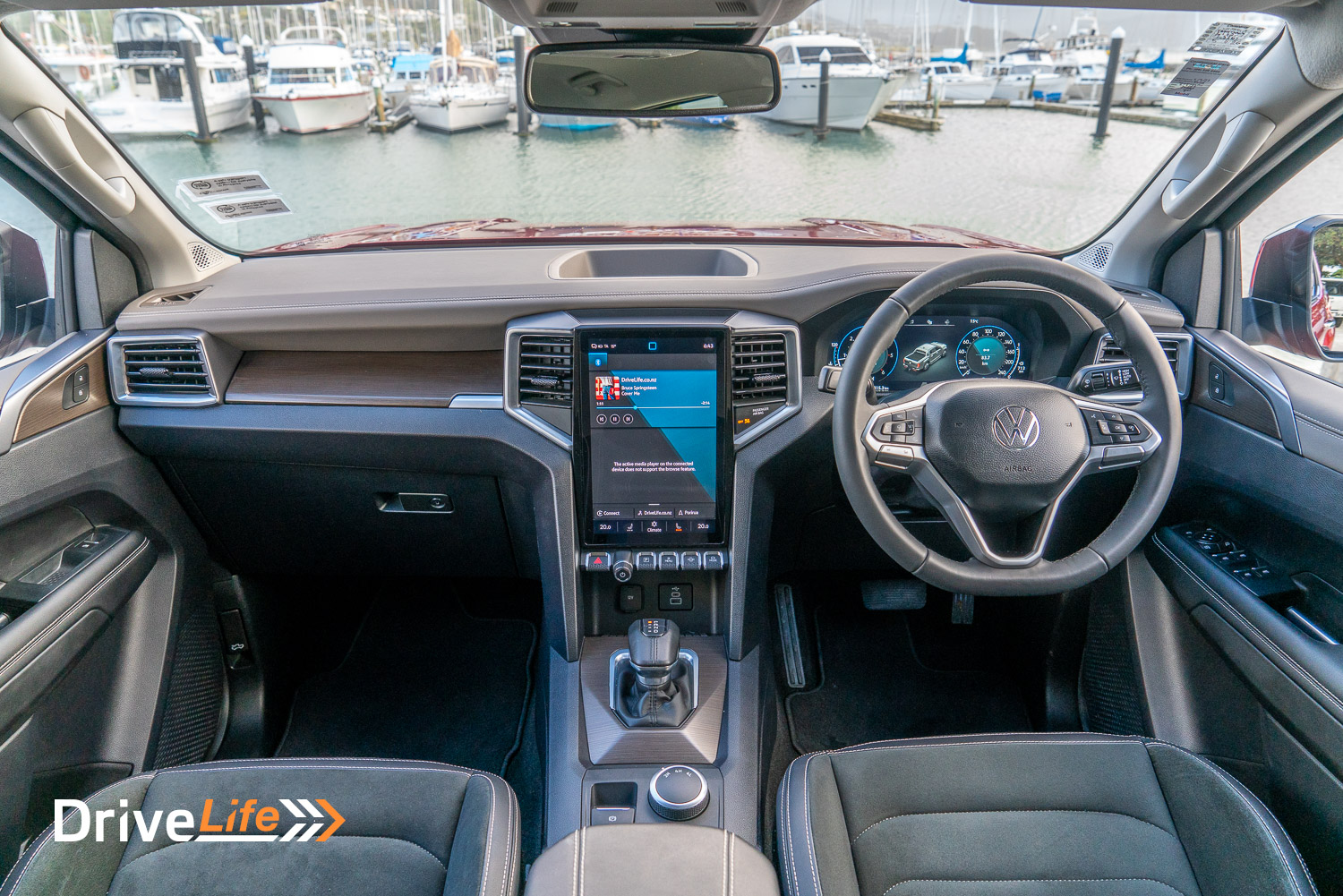
Of course, there are still a few carryovers. There’s no attempt to hide the Ford gear shifter, nor some of the other switchgear. But all in, the Amarok feels like a different ute from the inside. If anything, the Amarok’s interior better resembles a car-like layout, more so than the Ranger, anyway.
All of this is good, without question. But, the second-generation Amarok does falter in one key aspect. It’s missing that crucial Germanic build quality which made the original stand out.
I should clarify that the Amarok’s interior build quality is still good. It’s just that it’s not tangibly better than the Ranger. This is perhaps more of a credit to Ford than a criticism of Volkswagen, but the Amarok is, or was, the premium alternative.
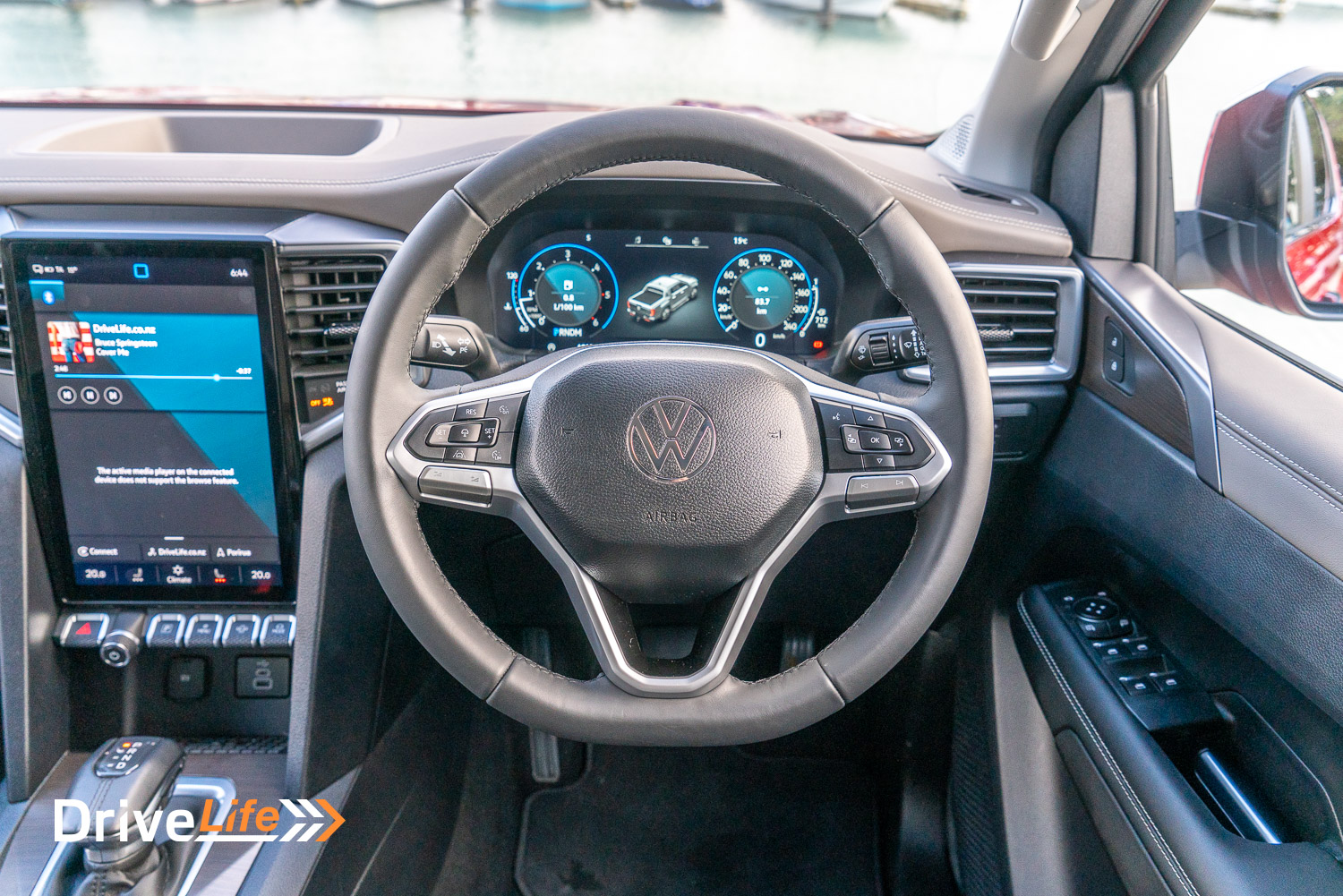
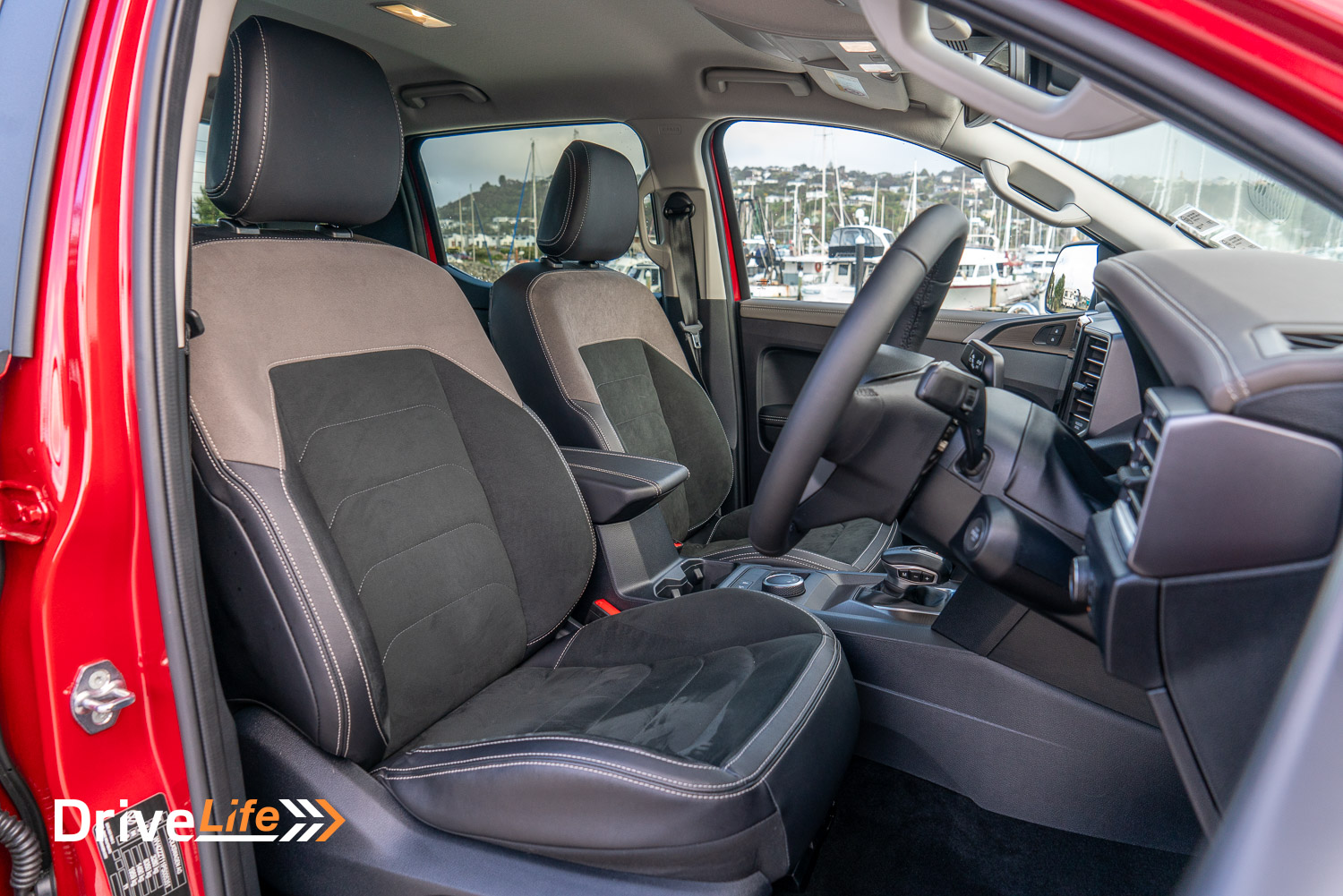
If there are any blunter criticisms, that would relate to the front seats. The Volkswagen-supplied seats present themselves well, being wrapped in a snazzy suede and leatherette combination. However, these are probably some of the smallest seats I’ve encountered in a ute. For reference, I am 5’11 and wear 34’’ jeans. Personally, I found the seat bases didn’t extend long enough. The side bolstering was on the tighter side, but was fine for me. Anyone bigger mightn’t be so agreeable.
It seems that Volkswagen may have thought too hard about project managers and the inseam of their skinny jeans in designing these seats. At least the cup holders fit a latte, eh?
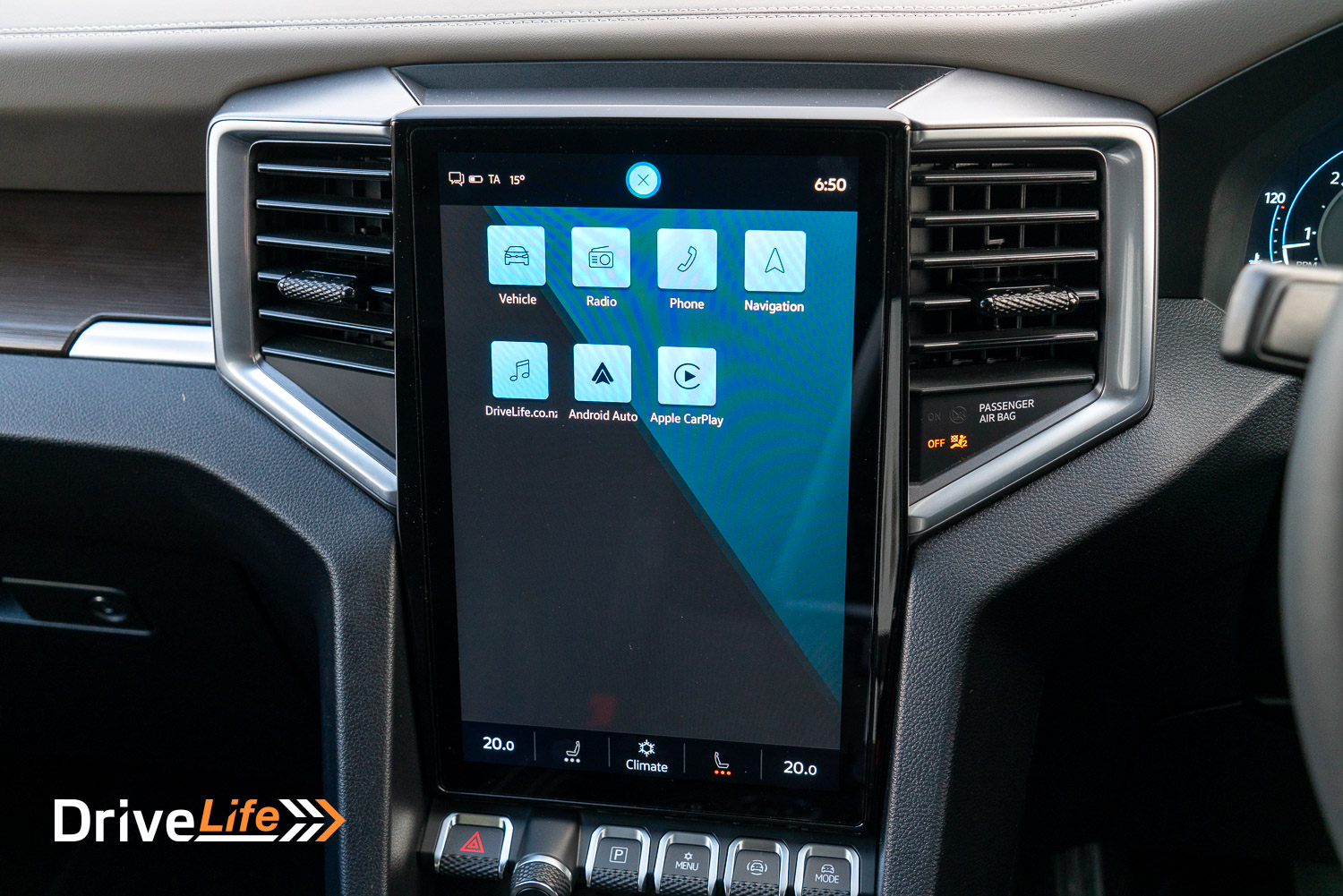
Although I’ve been a tad lukewarm on the Amarok’s cabin thus far, the Amarok does have a few areas where there is a clear-cut improvement over the Ranger. The centre infotainment is one of those areas. Simply, the Volkswagen UI, I think, is easier to interact with compared with the Ranger. No better is this shown than through the soft controls for the climate settings. Volkswagen’s controls are simple (particularly those for the heated seats), compared with some of the asinine controls in the Ford.
Hardware-wise, the infotainment systems between the two are more or less on par. They have similar quality graphics and response times. Volkswagen has included some toggles – or physical shortcuts – below their screen for some of the important bits.
Anyway, that’s enough chat about the front. What about the back?
Well, the rear tray isn’t exactly full of surprises. Like the Ranger, the tray can fit a European-spec pallet between the rear arches. The tray doesn’t have some of the workman’s features the Ranger has, like the cut-outs for C-clamps or the in-built side step on the bumpers. Although, the Amarok Style does have a deck slider as standard. There’s also a 12-volt outlet, tie-down hooks and a small LED light in the tray too.
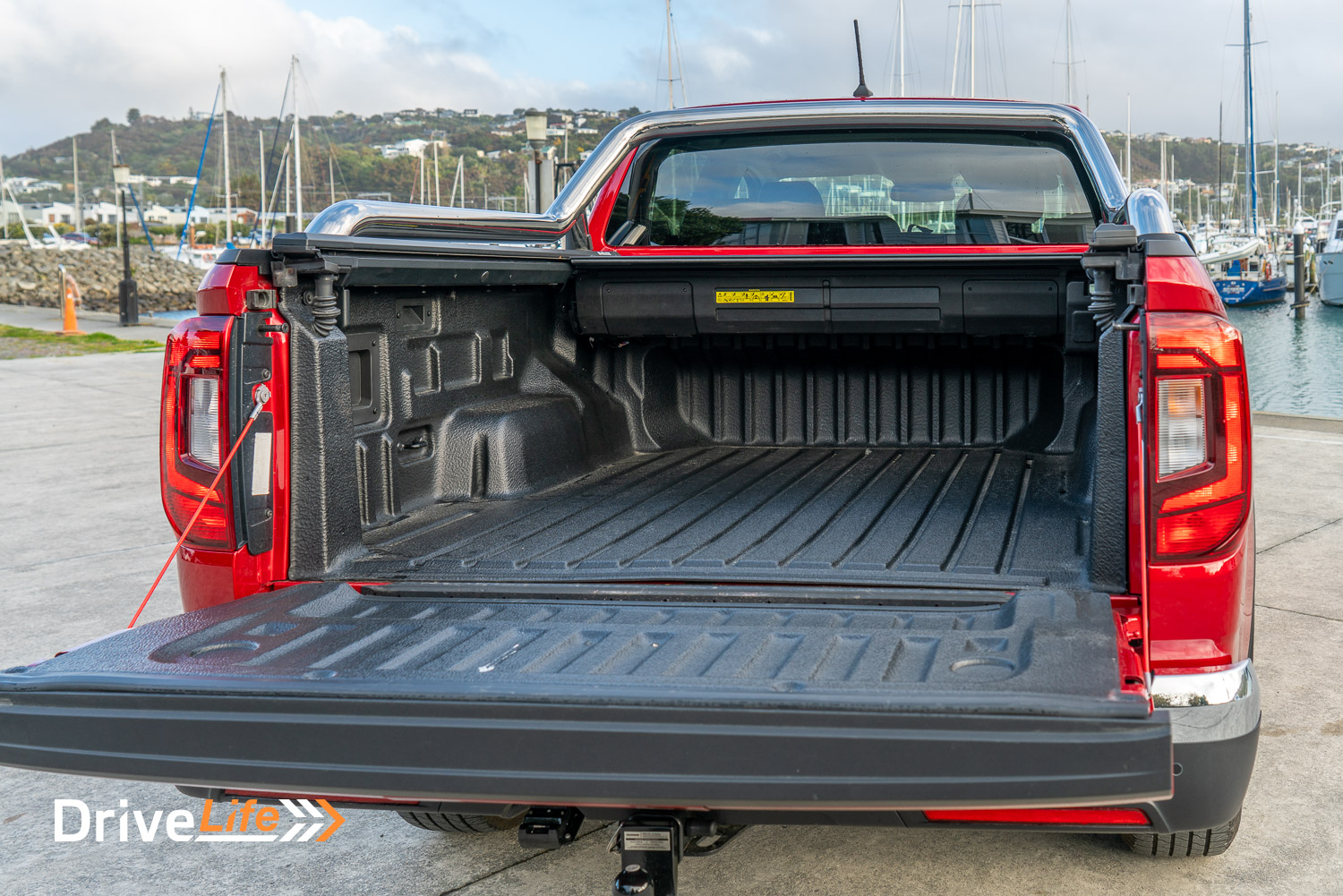
The rear seats of a ute are usually reserved for one of three types – apprentices, children or dogs (when the tray is in use). The longer wheelbase of the new-gen Amarok means there’s more legroom in the back, meaning you’ll get hearty cheers (or perhaps a few enthusiastic licks) from whoever is back there.
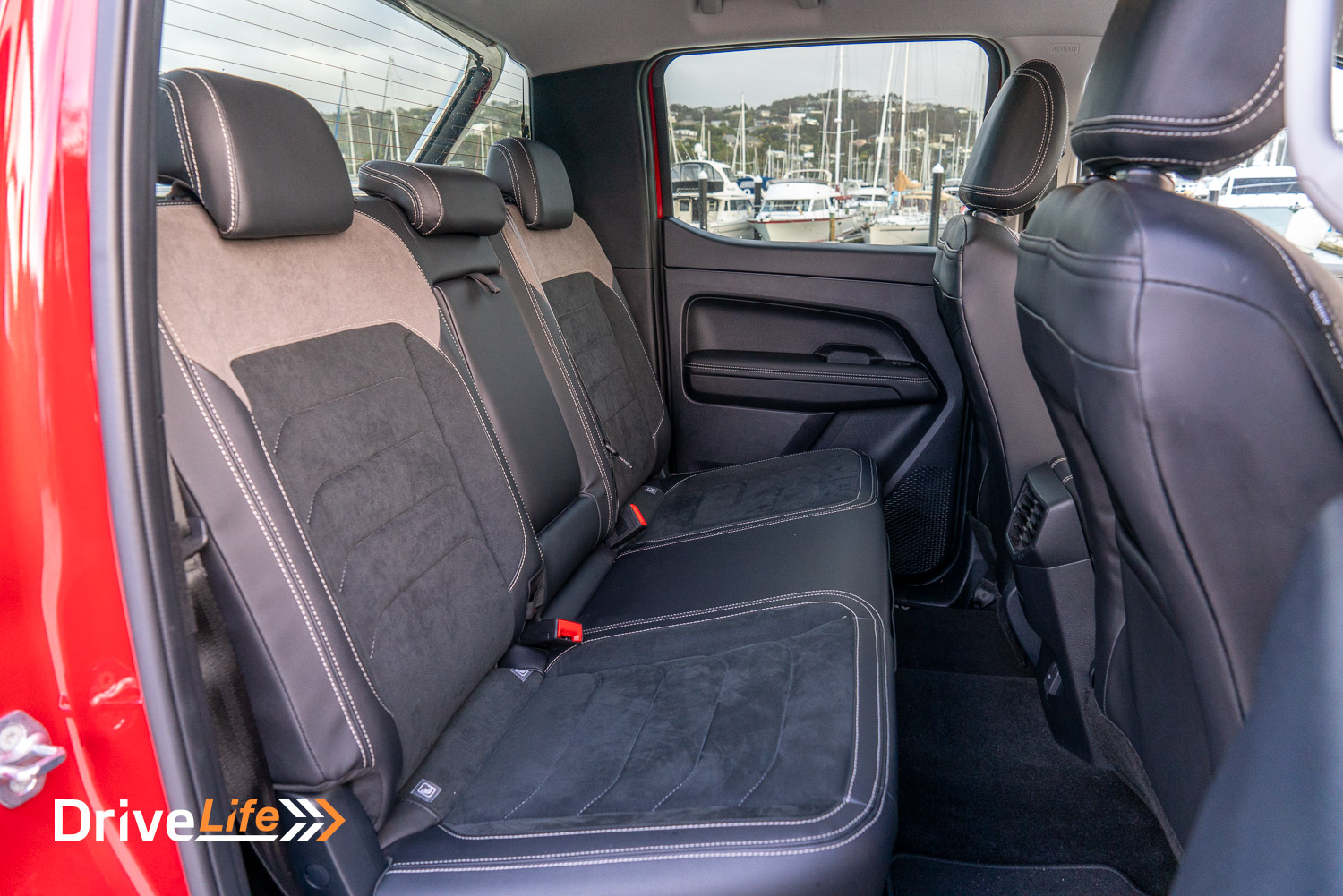
What’s The 2023 Volkswagen Amarok Style Like To Drive?
So far, Volkswagen has made a convincing effort to make the Amarok as much its own creation as opposed to a simple Ranger imitator. But the ploy pretty much ends once you get underneath the bonnet. Pop it open, and you’ll find no attempt to hide this ute’s roots.
Ford logos emblazoned proudly on the timing chain cover and a litany of parts labelled “FoMoCo” (shorthand for Ford Motor Company, in case ya didn’t know).
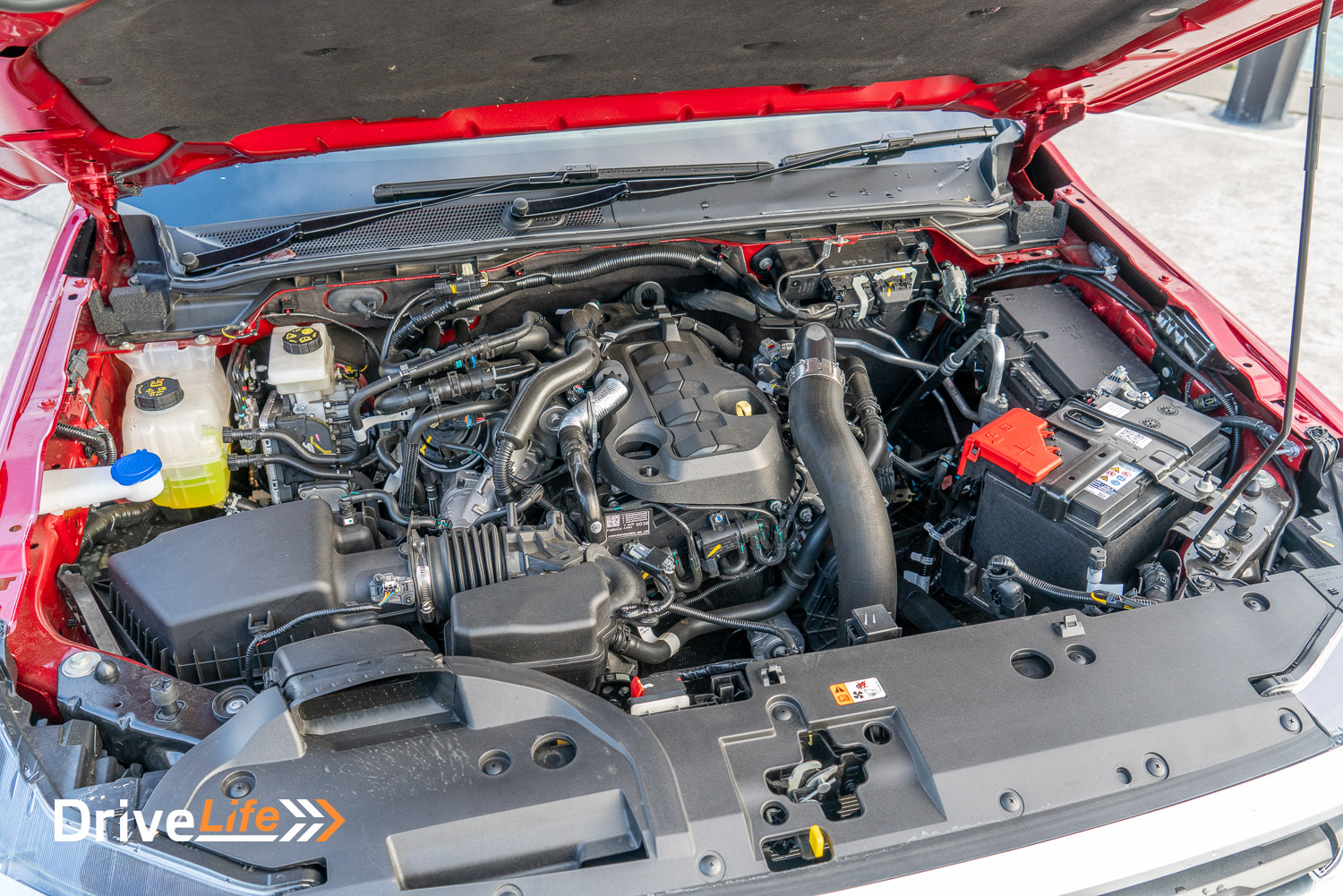
Car companies, even the big ones, are no strangers to badge engineering, although I do empathise with disappointed Amarok fans.
Volkswagen, which gave us a ground-up Amarok in 2010, simply decided not to this time around, resulting in the largest car company in the world (by revenue in 2023) going to a smaller competitor to borrow their ute.
On the surface, it lacks commitment to the Amarok, even though Volkswagen probably has many commercially valid reasons for the decision. And, if we’re honest with ourselves, Ford is pretty darn good at making utes.
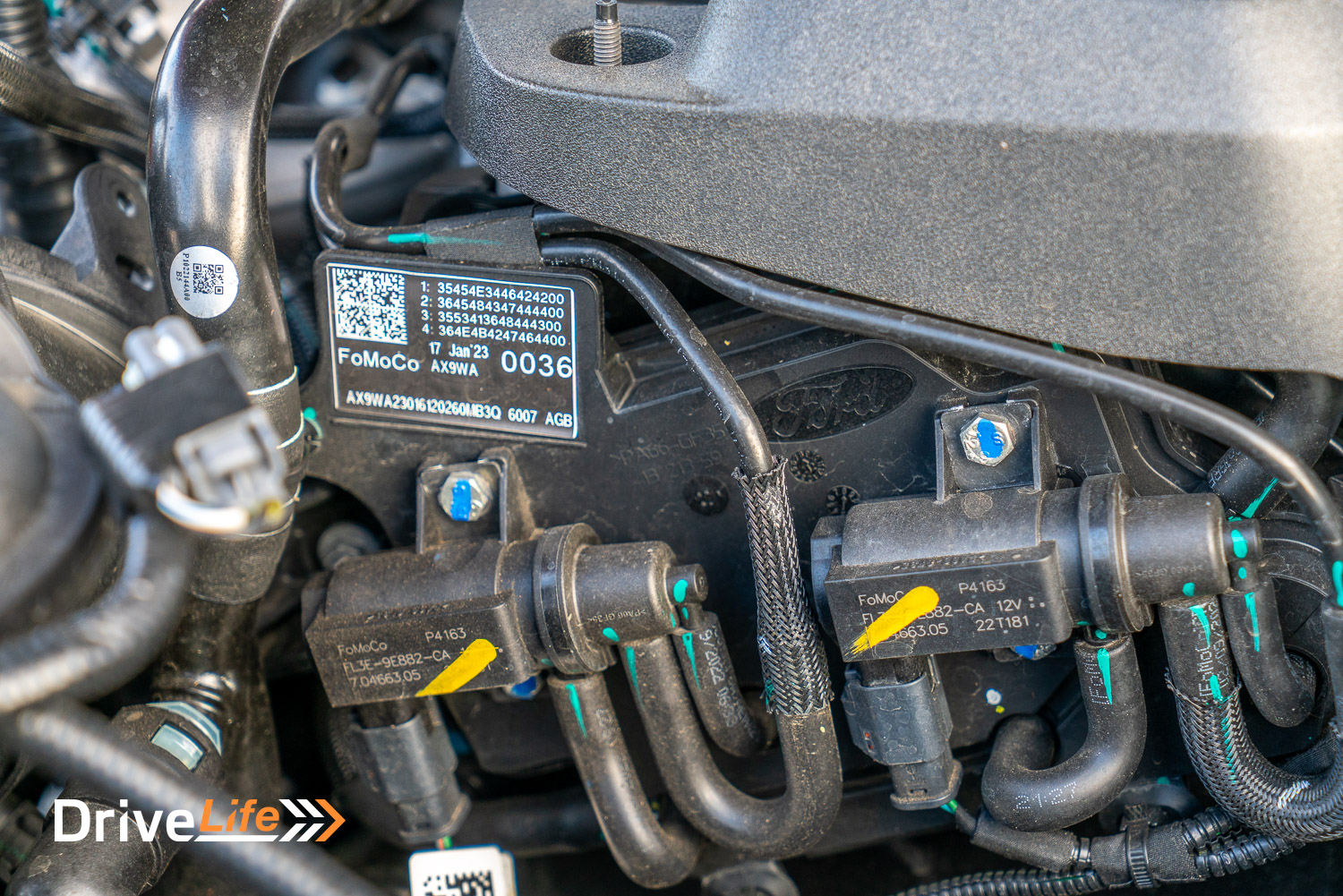
The Ranger is a damn good ute to drive and far better than many of its competitors. Volkswagen could do worse for a platform, so maybe their approach of copying Ford’s homework is one of sly genius.
The 2.0-litre twin-turbo diesel engine powering our Amarok Style pumps out a healthy 154kW of power and 500Nm of torque – no difference between it and the Ranger. That is perfectly fine by me because this 4-cylinder is a spirited motor.
All 500Nm of those turning forces are available between 1750-2000 rpm, delivering a solid thrust from near the get-go. With 154kW of power on tap you aren’t left wanting, and that motor can shift this 2.3 tonne frame with convincing pace. It’s also quite refined too, for what is otherwise a relatively strung-out diesel 4-popper.
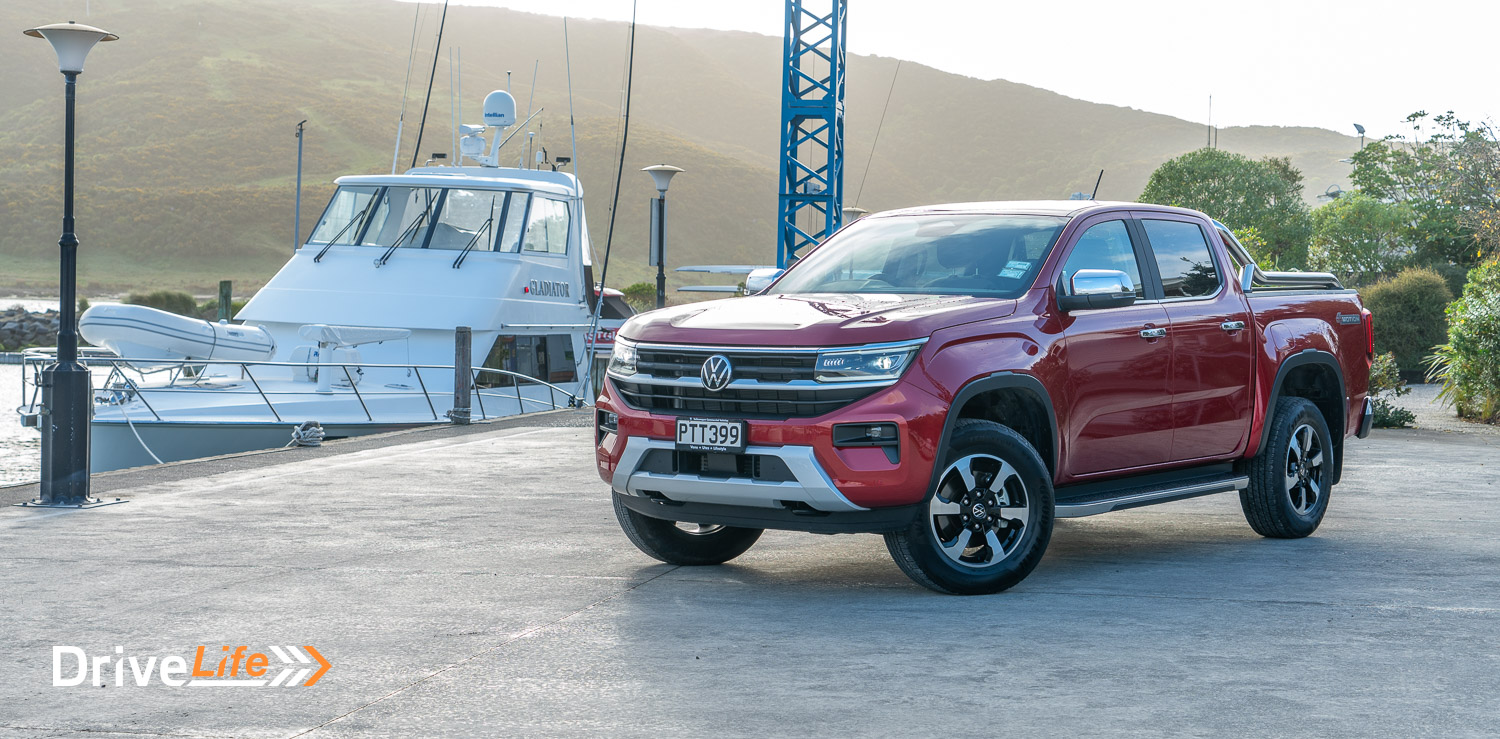
The 10-speed automatic gearbox is another outperformer. You’d not think you’re driving a ute if you shut your eyes, because each shift is buttery smooth. The shift logic is also excellent, meaning you’re unlikely to catch it hunting for gears when under load or when towing.
In all, this engine and gearbox combo are excellent in the Ranger, and it’s no exception for the Amarok.
Of course, there is one caveat to all this. That’s the V6 turbo found in the Amarok PanAmericana and the Adventura. The Ford F-150-derived engine one-ups the inline-four in nearly every category. Drive a PanAmericana, an Adventura, or an equivalent V6 Ranger, and it might ruin the inline-four for you.

This brings us onto handling and ride quality. Some older utes (and even a few modern ones) have particularly punishing ride quality. It’s a difficult problem to surmount in a ute, given its ladder-frame chassis, a high-riding body and (usually) stiff leaf springs in the back.
Like any ute, the Amarok – and also, the Ranger – have these limitations. However, the ride quality of the modern Ranger – and now, the Amarok – will leave you convinced it has one of the most well-developed chassis in the ute segment.
It’s not on the same level as a uni-bodied SUV, like some of the marketing gaff will try to convince you. Yet, it is well ahead of its competitors.
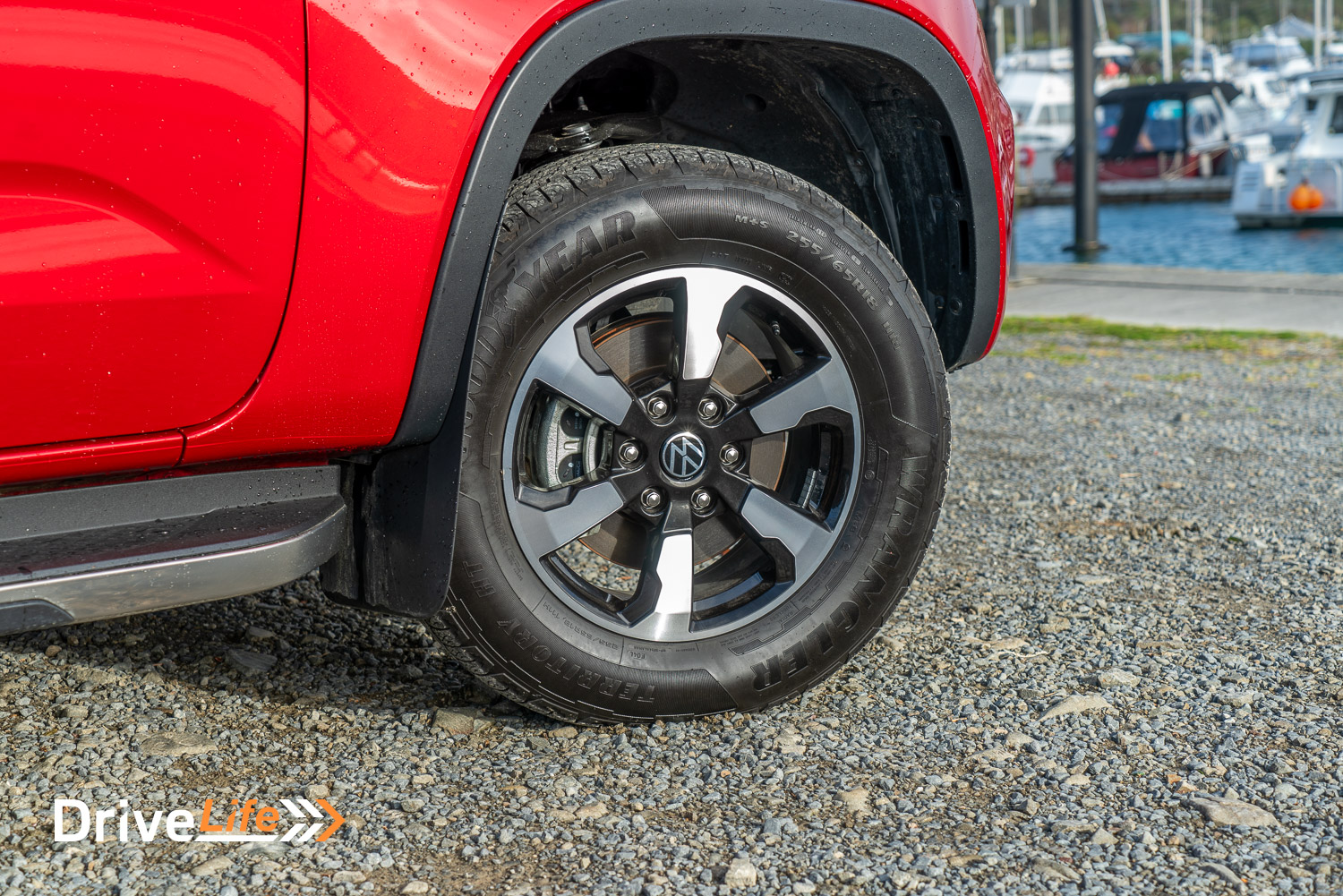
A similar story can be told for the Amarok’s handling. The Amarok’s front suspension dampening and cornering stability is great for a ute. Whether the corners are tight and technical or fast and progressive, our Amarok Style remained mostly undeterred.
I say mostly because bumpier roads will still bring out the usual rear-end fidgets and shimmies which are typical of many utes, even though the Amarok does a better job managing them. And, if you’re ever worried, the Amarok’s safety technologies are all fairly well calibrated.
In all, the Amarok is a solid performing ute. It’s on par performance-wise with the Ranger, and we know the Ranger is an excellent ute. But, that’s also Amarok’s problem. The first-gen Amarok developed its reputation for being the nicer ute in its segment, so there’s a lingering expectation that it should be better than the Ranger.
And don’t get me wrong, the Amarok is nice. But, it’s only really as nice as the Ranger.
I think you see where I’m going with this.
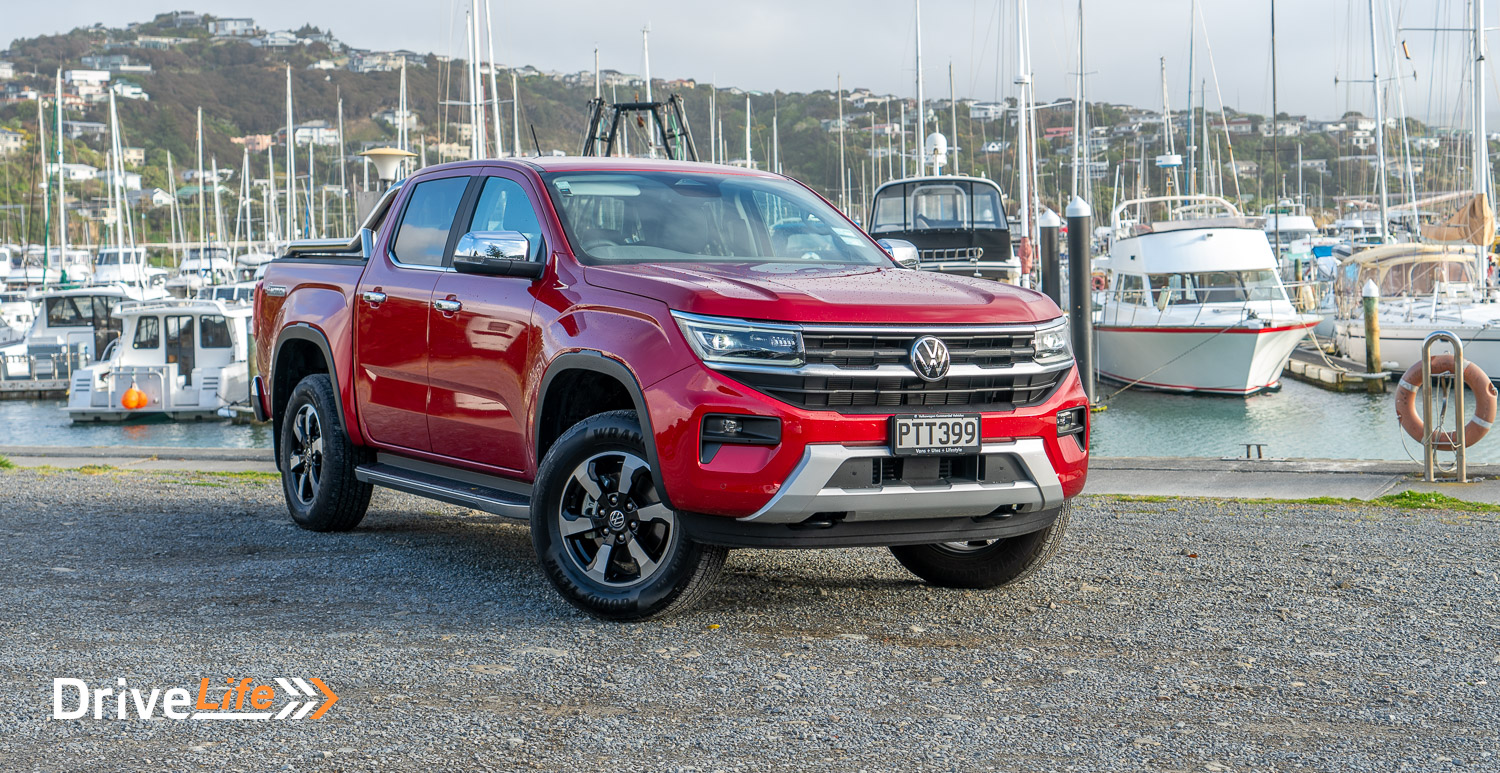
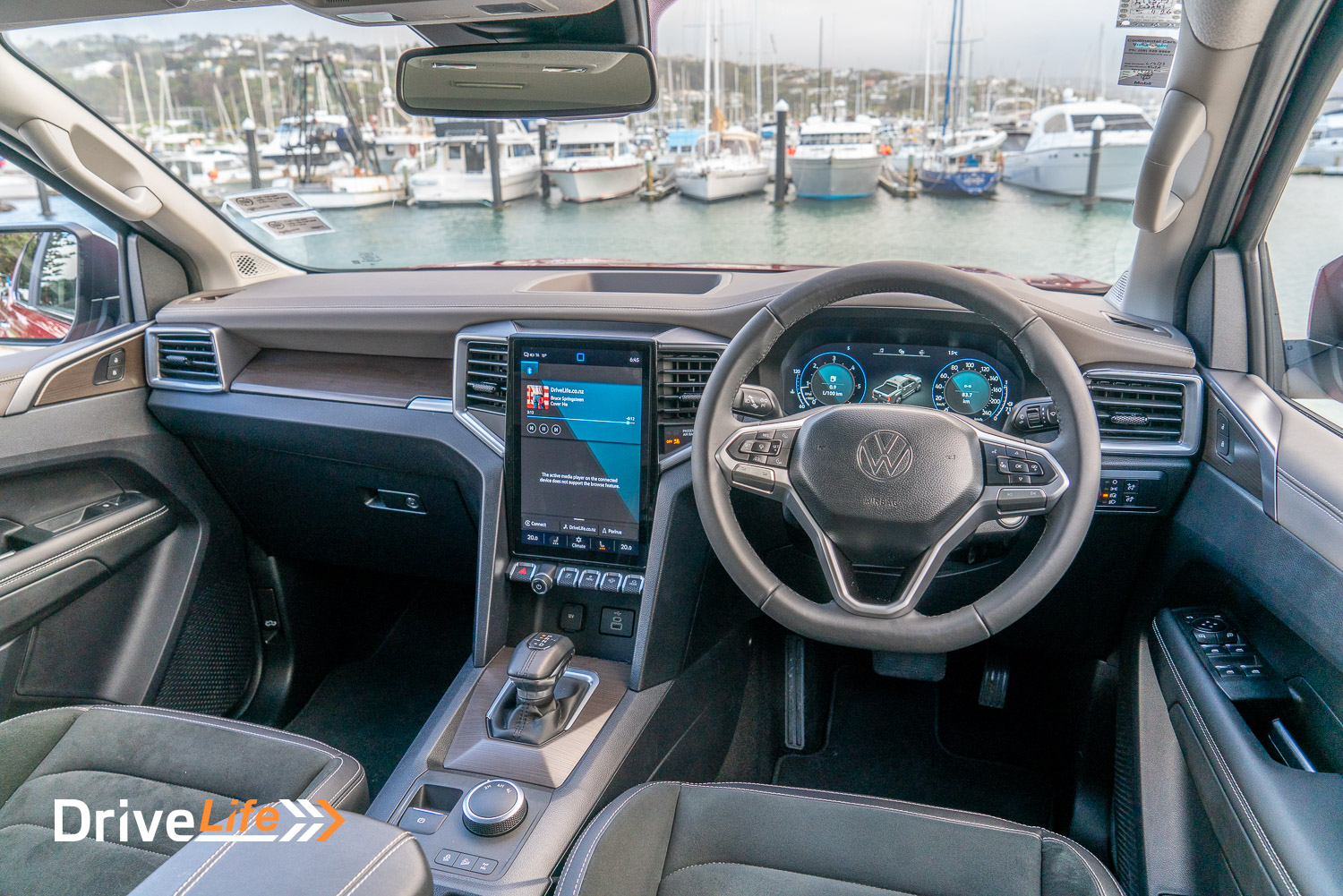
2023 Volkswagen Amarok Style – Specifications
| Vehicle Type | 4-door dual-cab Ute |
| Starting Price | $67,000 |
| Price as Tested | $77,500 |
| Engine | 2.0-litre 4-cylinder twin-turbo diesel |
| Power, Torque, kW/Nm | 154/500 |
| Transmission | 10-speed automatic |
| Spare Wheel | Full size |
| Kerb Weight, Kg | 2,335 |
| Length x Width x Height mm | 5362 x 1917 x 1871 |
| Tray Payload, Kg | 945 |
| Fuel tank capacity, litres | 80 |
| Fuel Economy, L/100km | Advertised Spec – Combined – 8.3 Real-World Test – Combined – 9.4 Low Usage: 0-6 / Medium Usage 6-12 / High Usage 12+ |
| Towing Capacity Kg, unbraked/braked | 750/3,500 |
| Turning circle, metres | 12.9 Small: 6-10m / Medium 10-12m / Large 12m+ |
| Warranty | 5-year/150,000-km manufacturer’s warranty 5-year Roadside Assist |
| Safety information | ANCAP Rating – 5 stars Rightcar.govt.nz – 5 Stars – PTT399 |
Have you enjoyed this review? Be sure to join our monthly email newsletter list so you don’t miss a single review!


